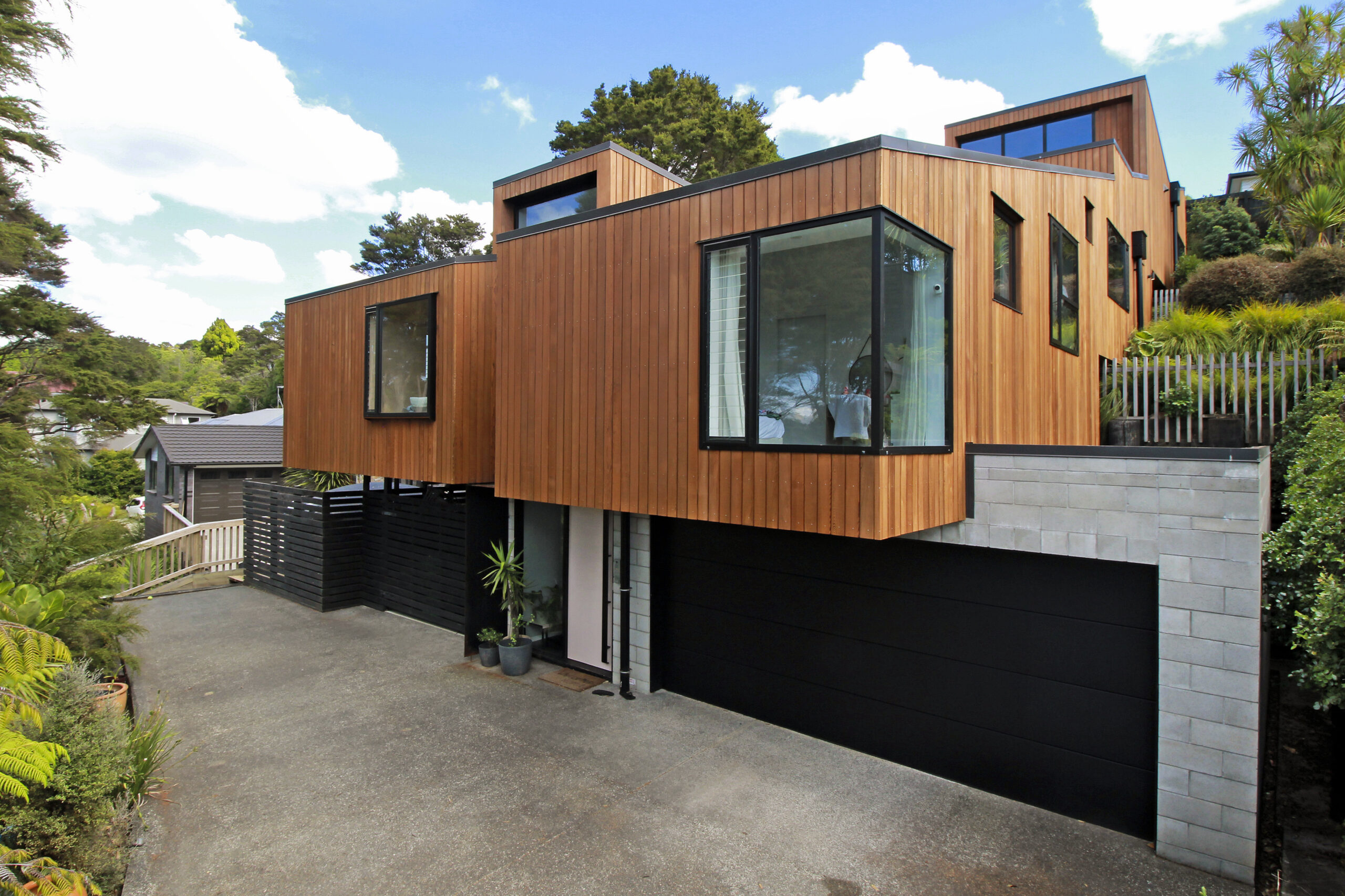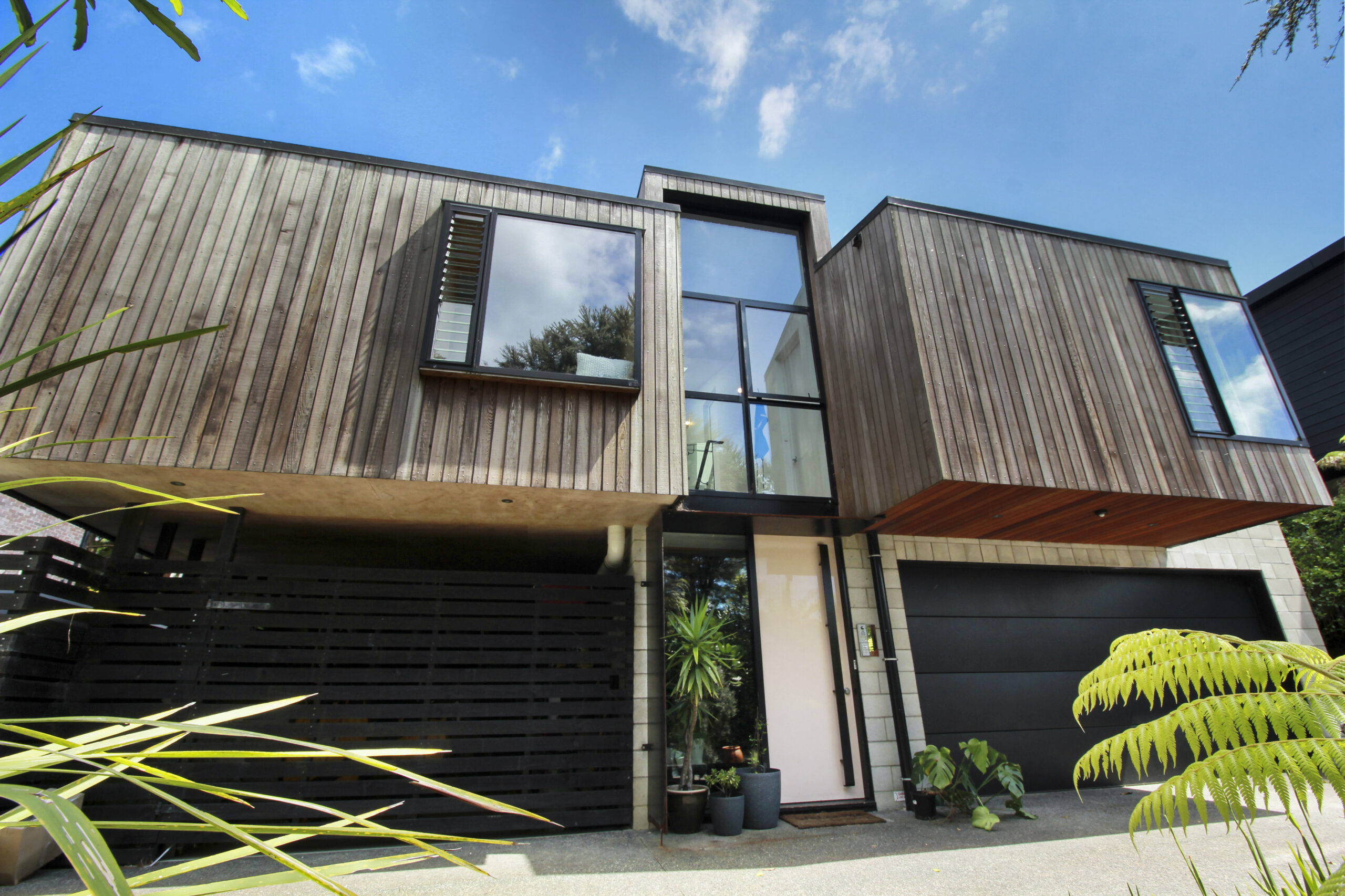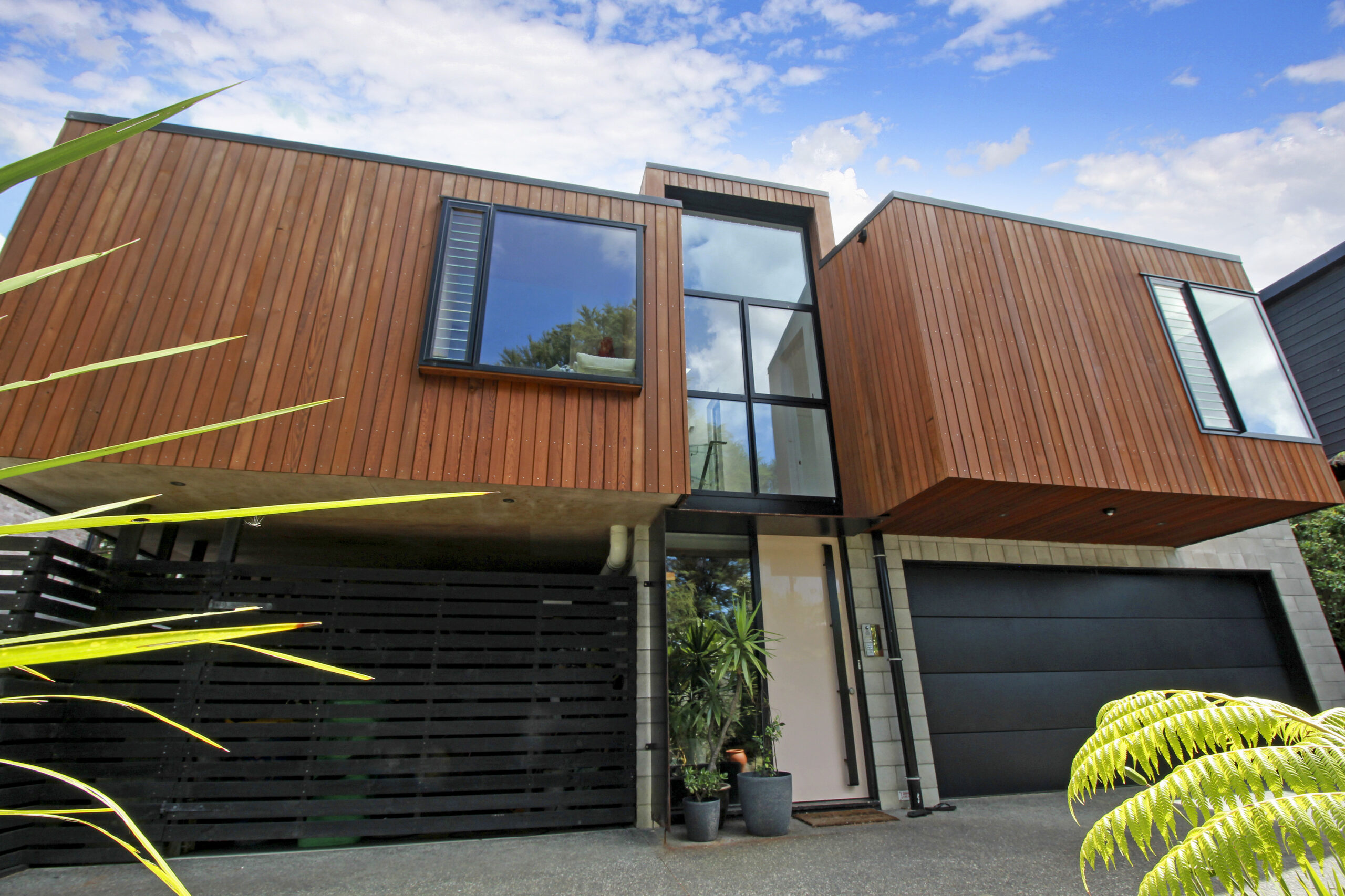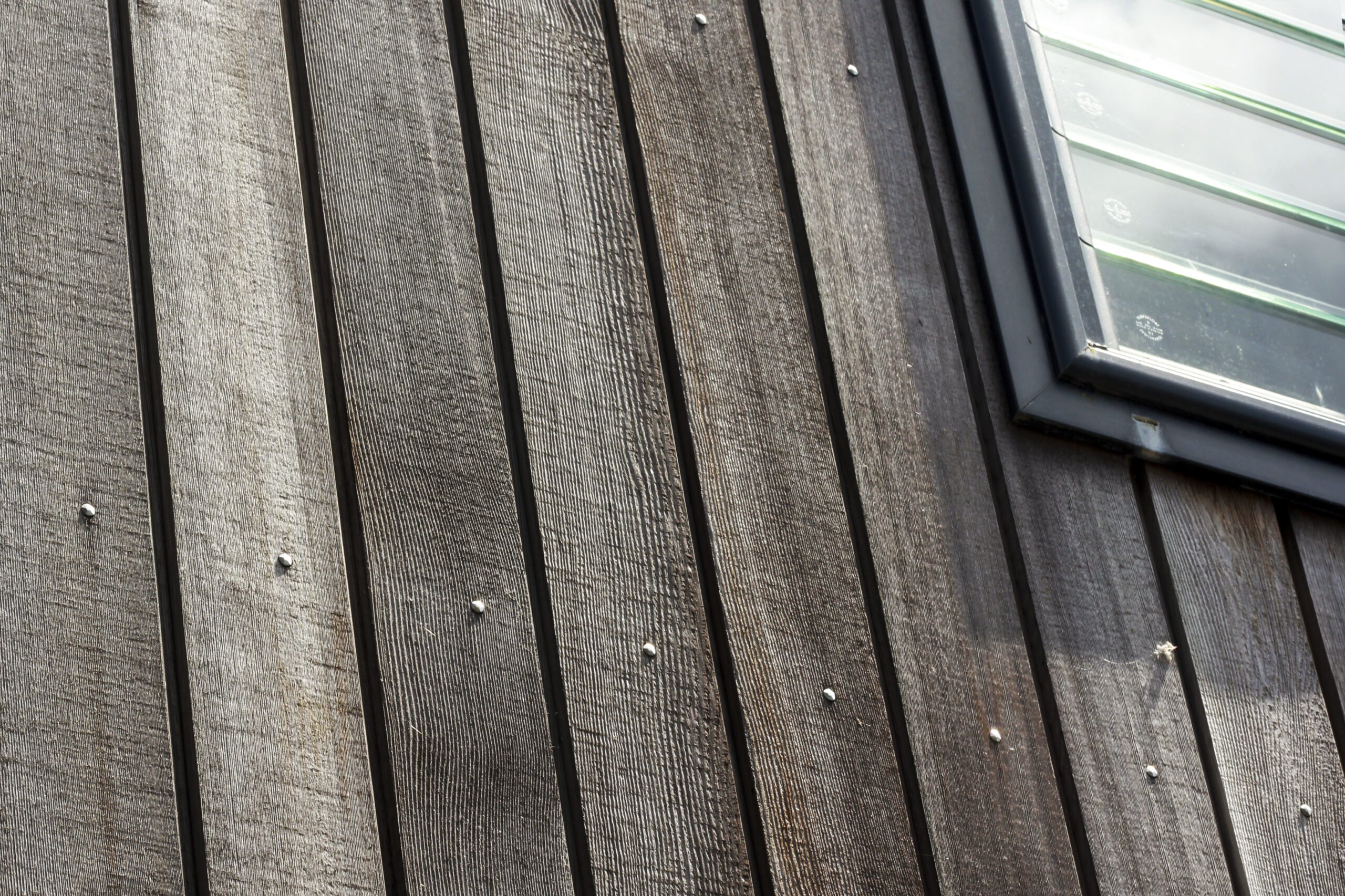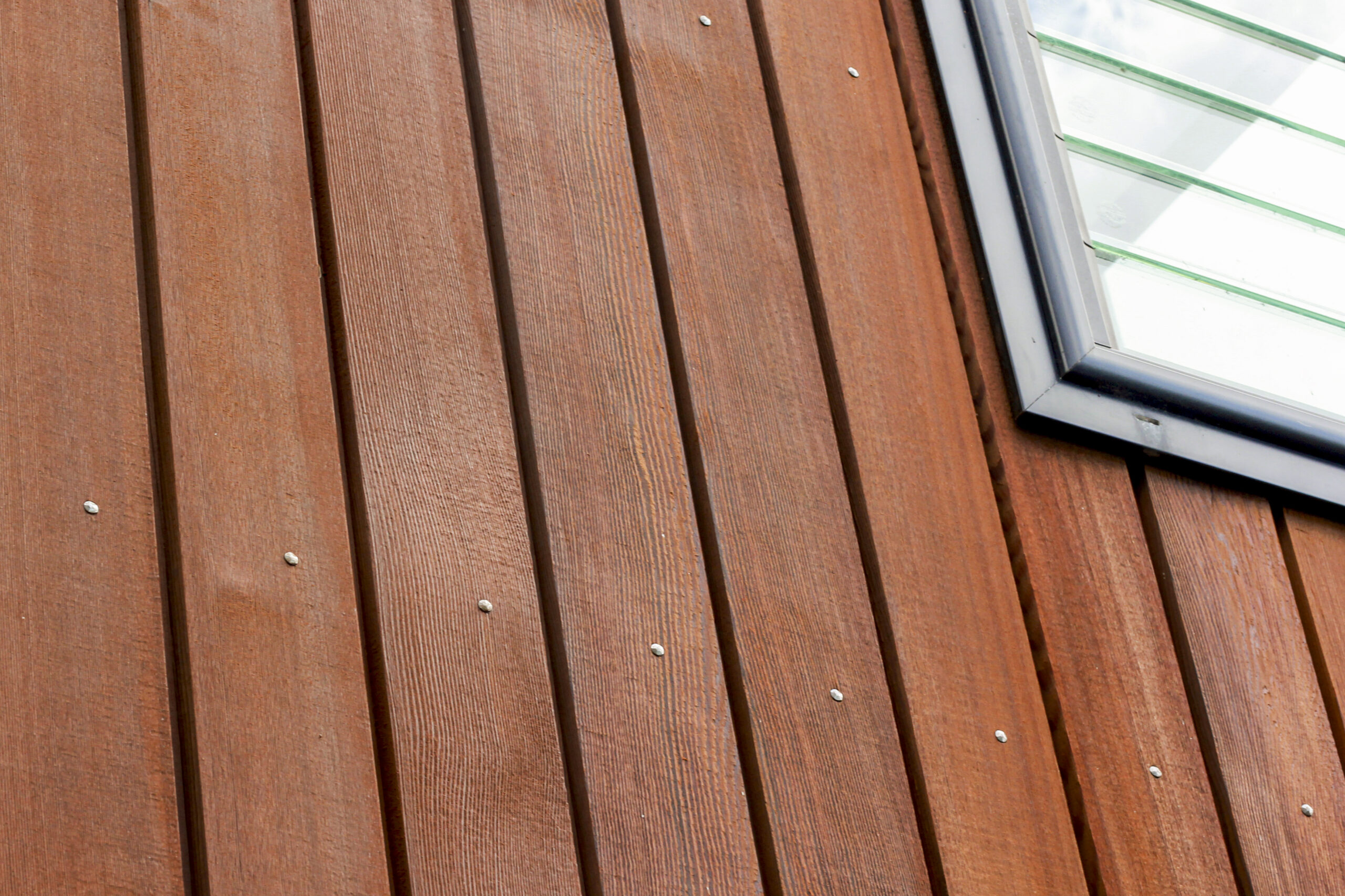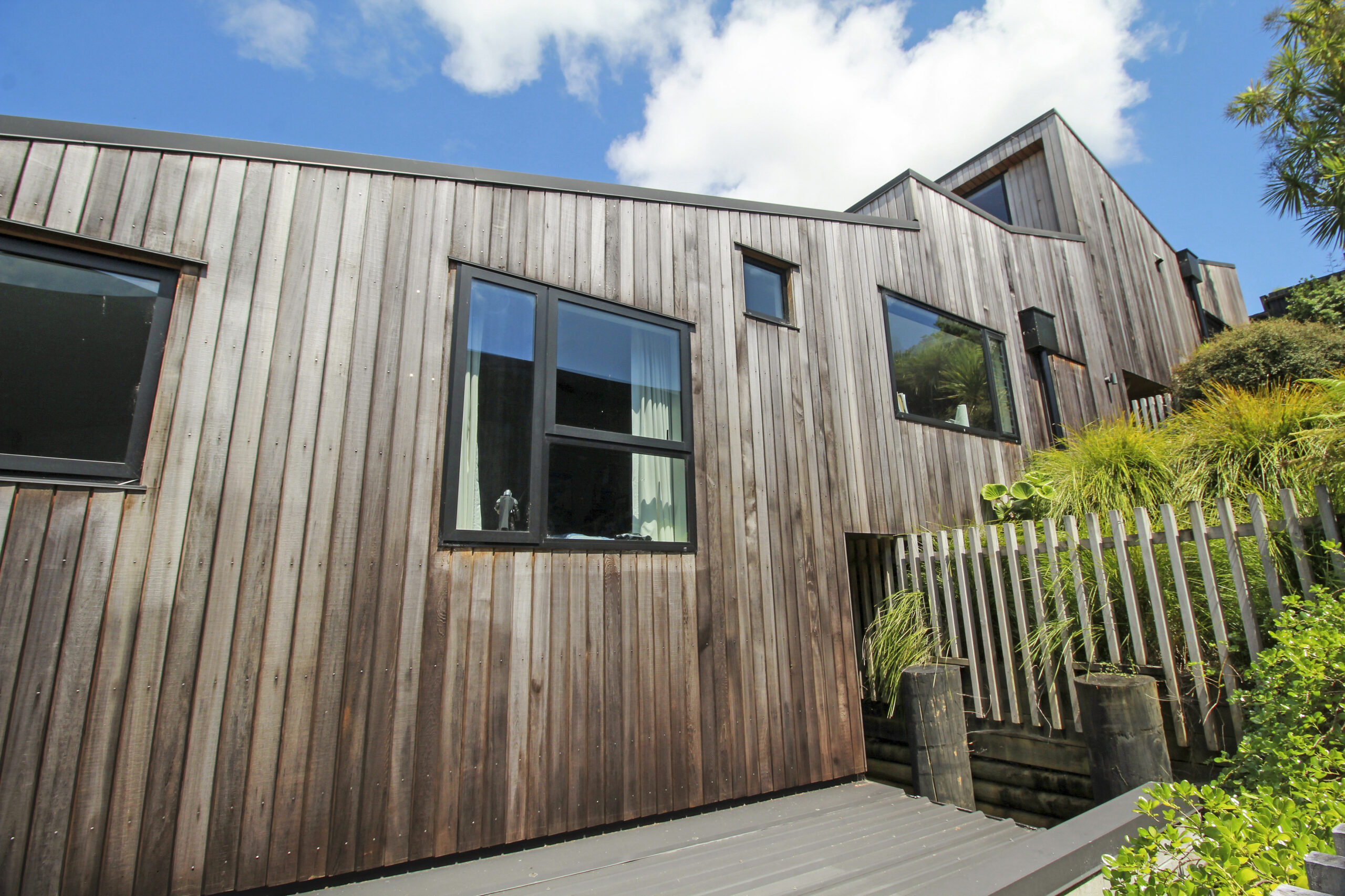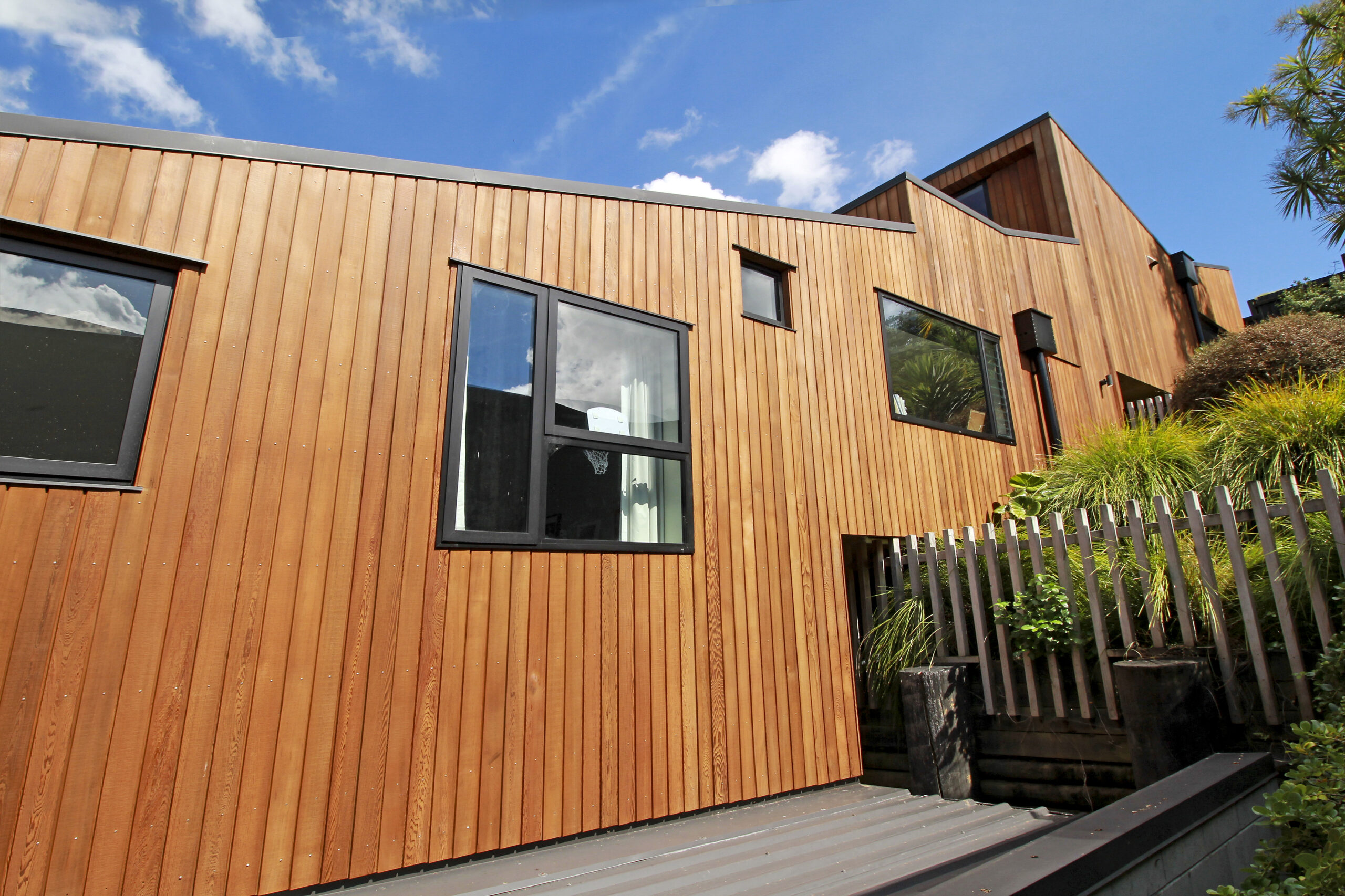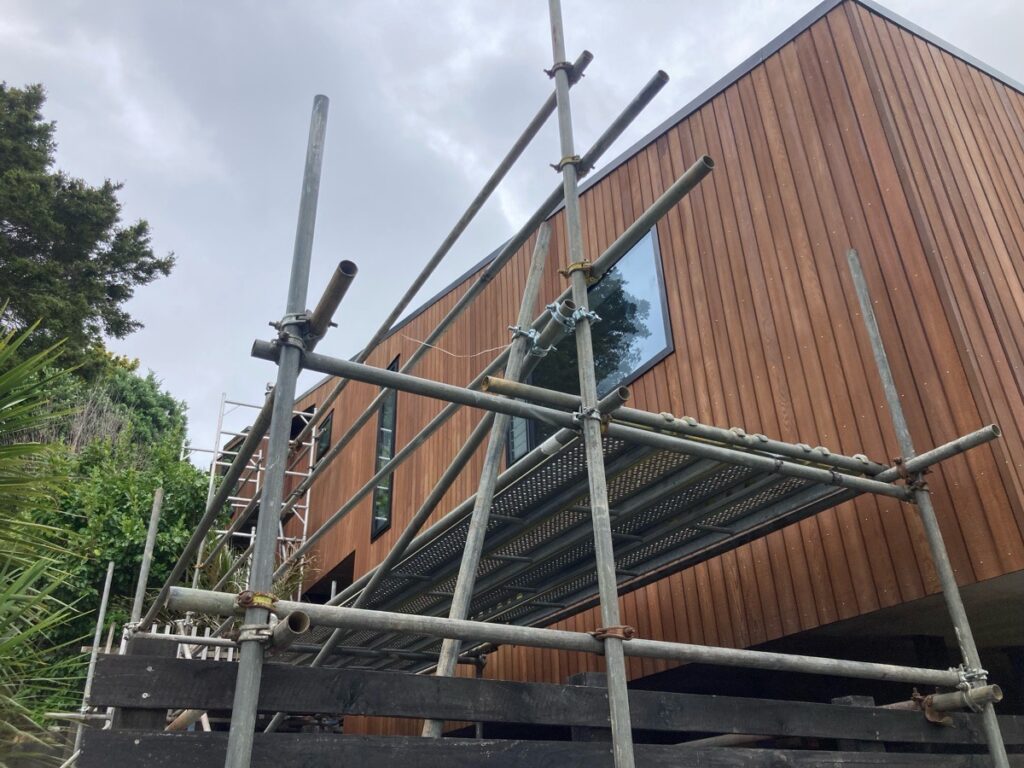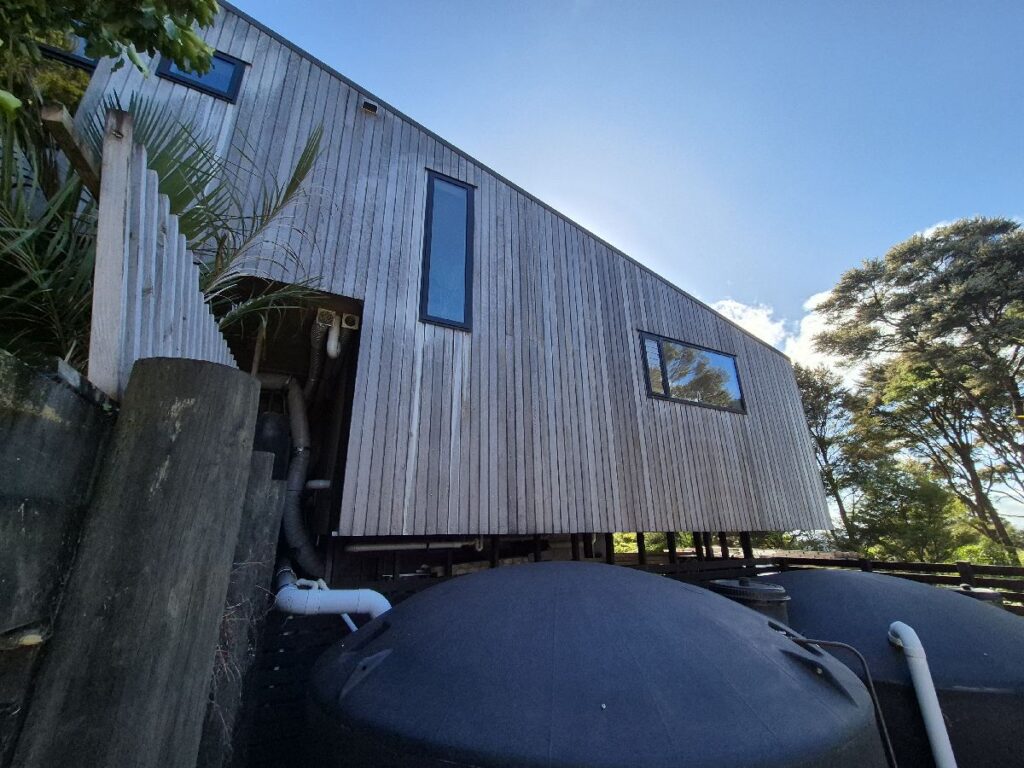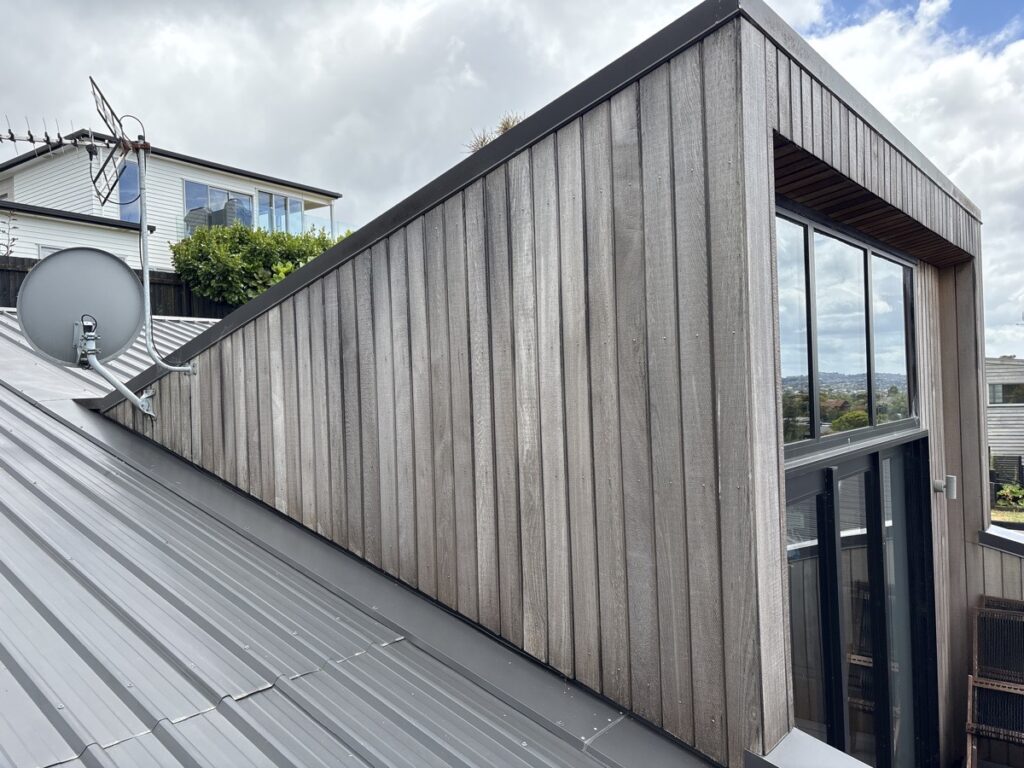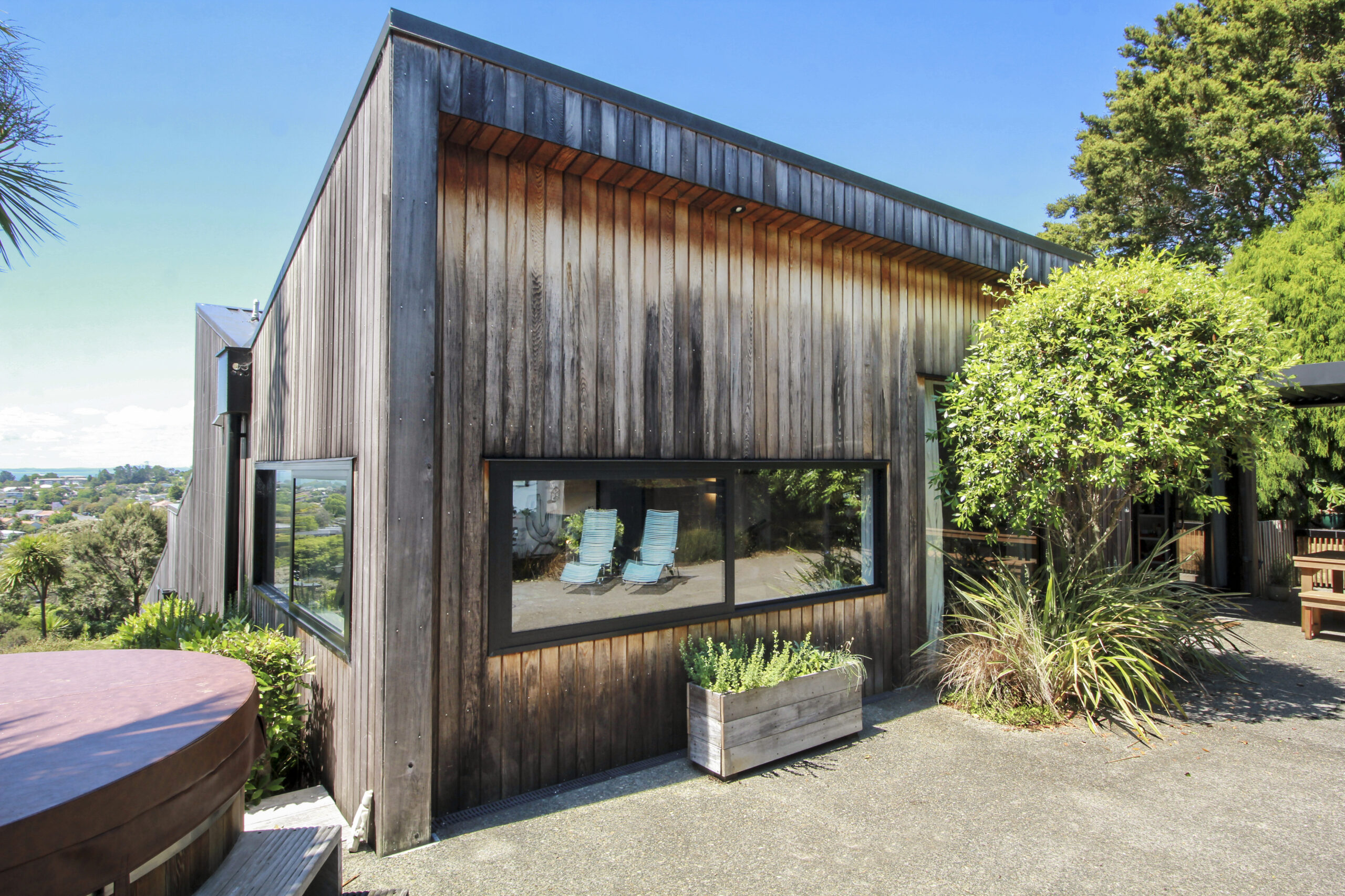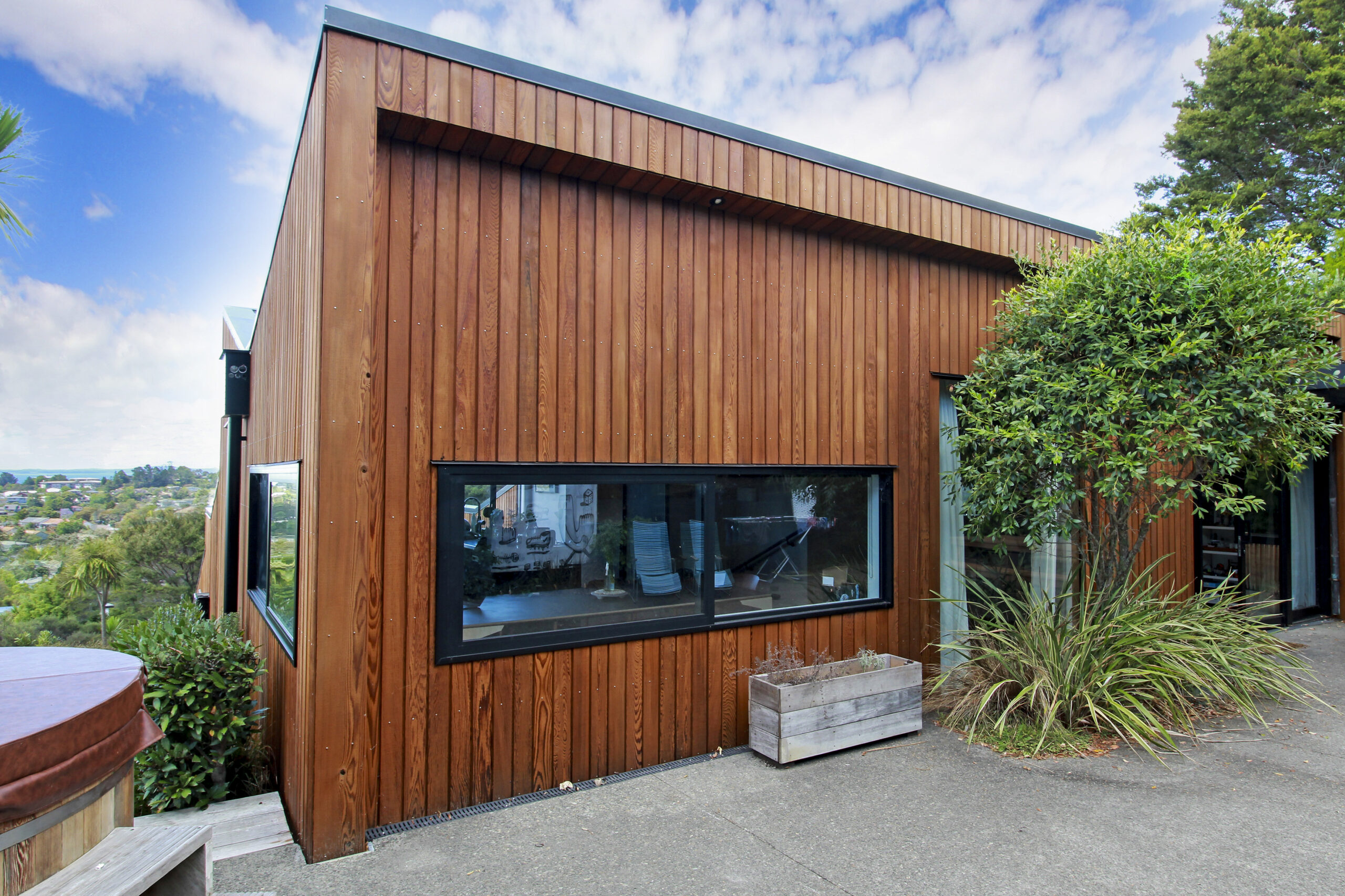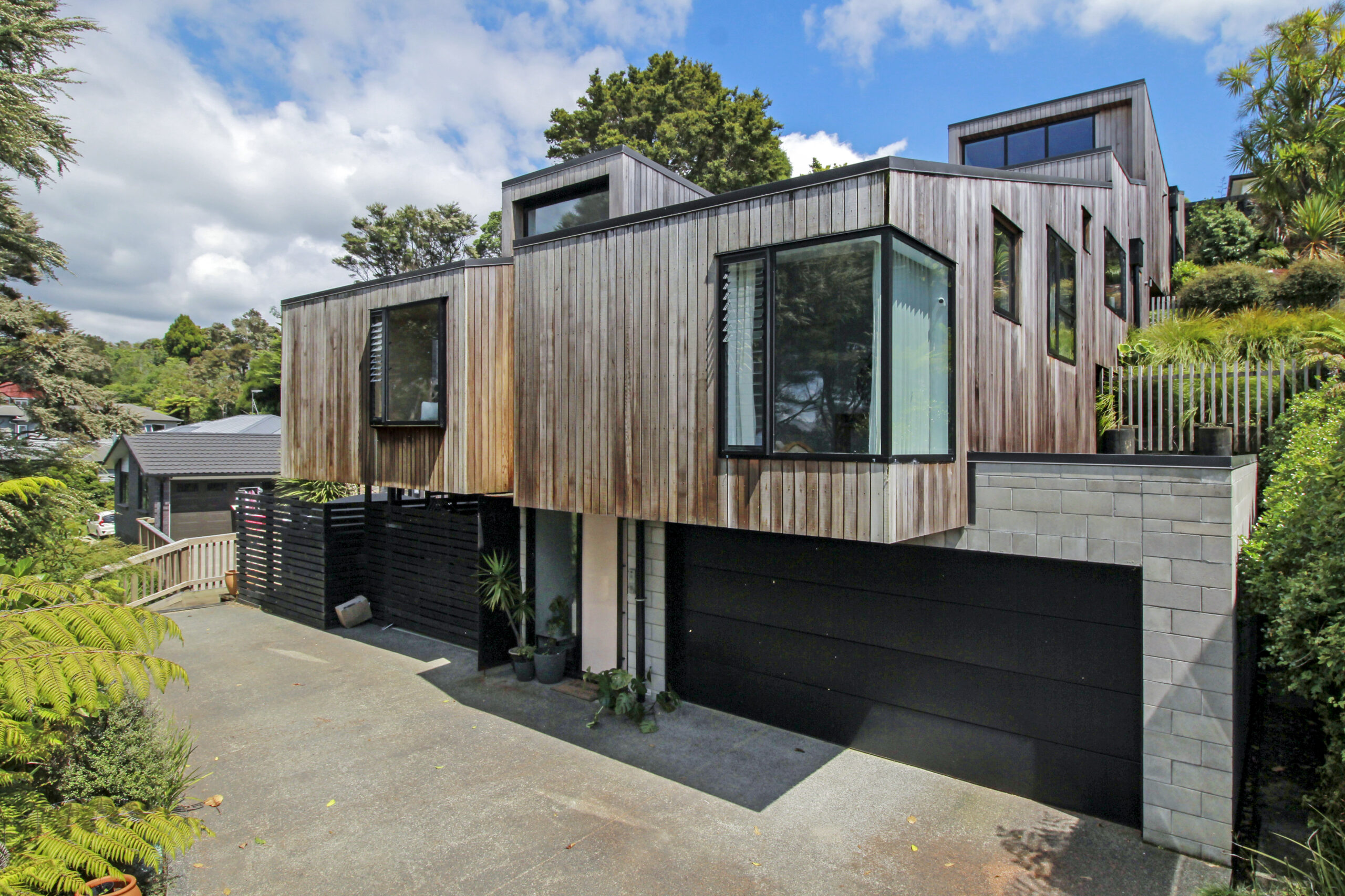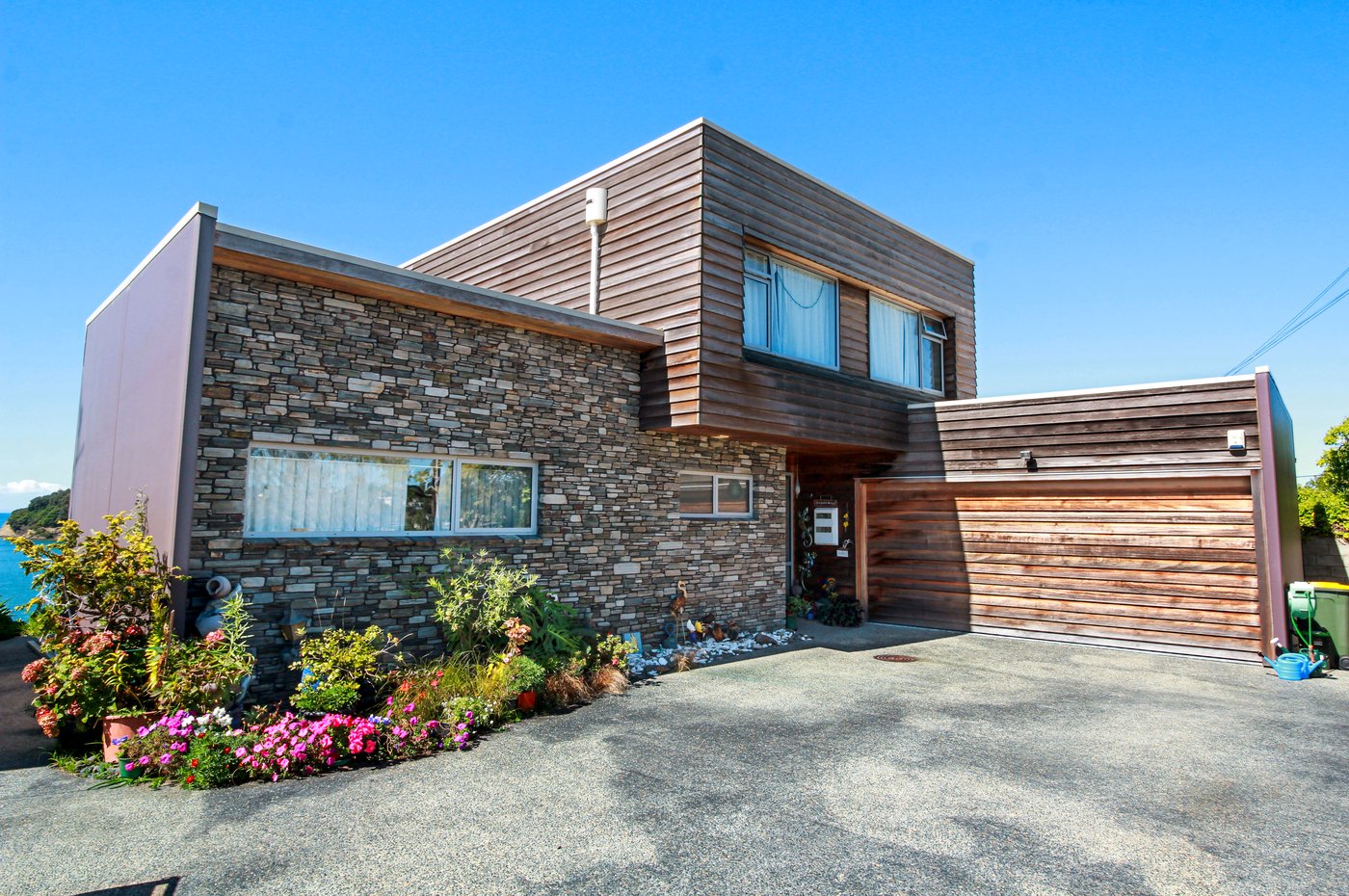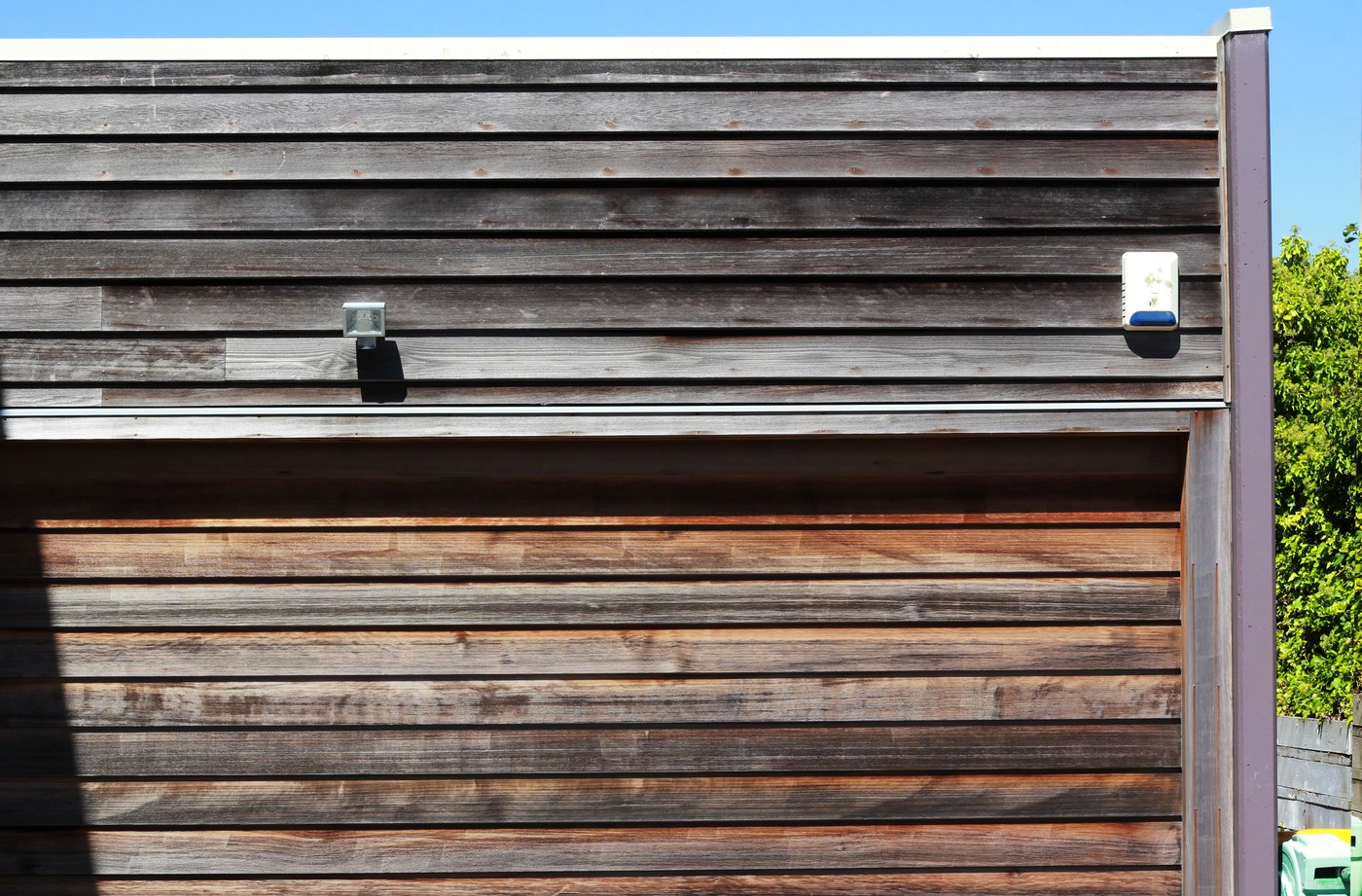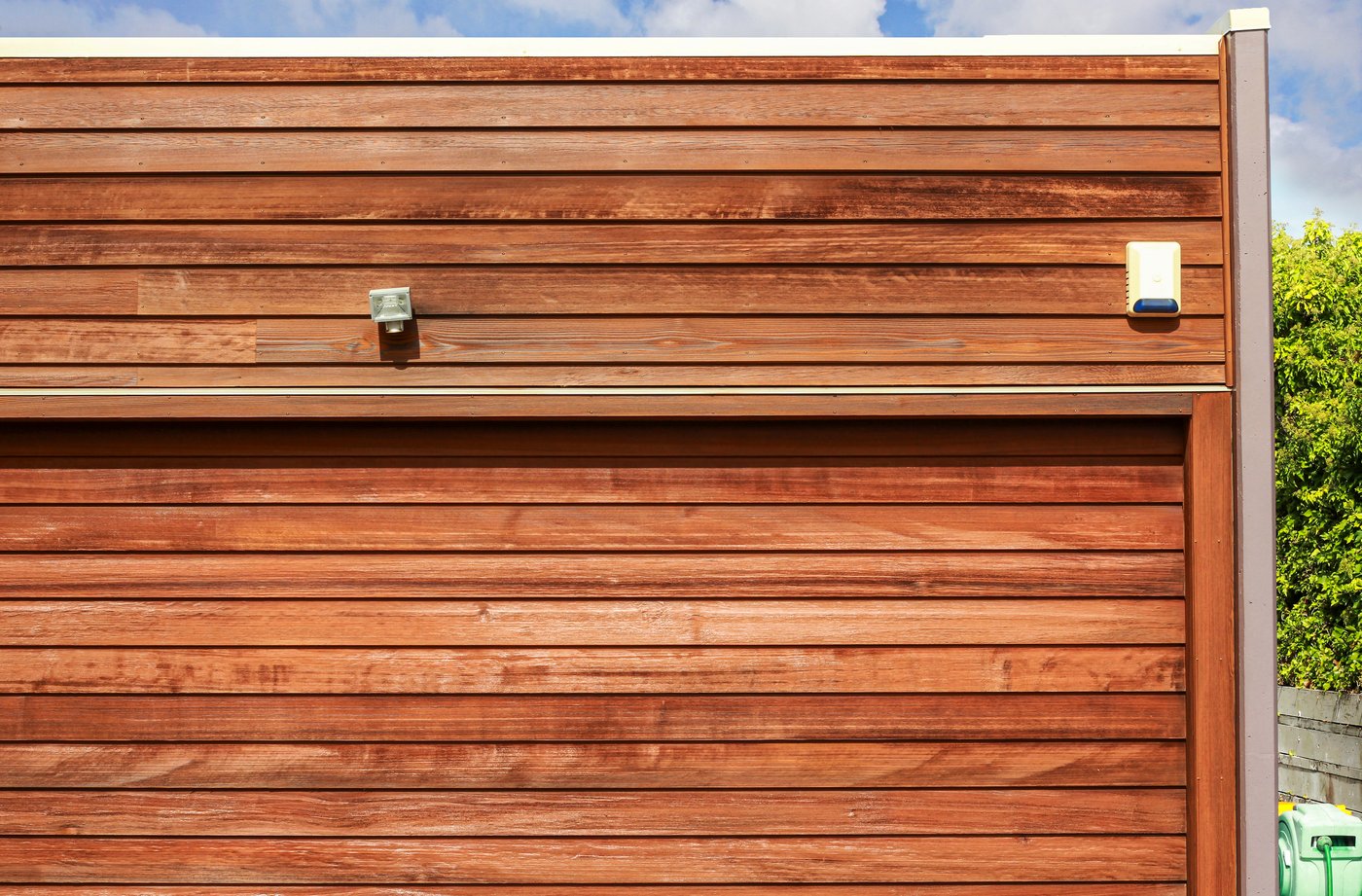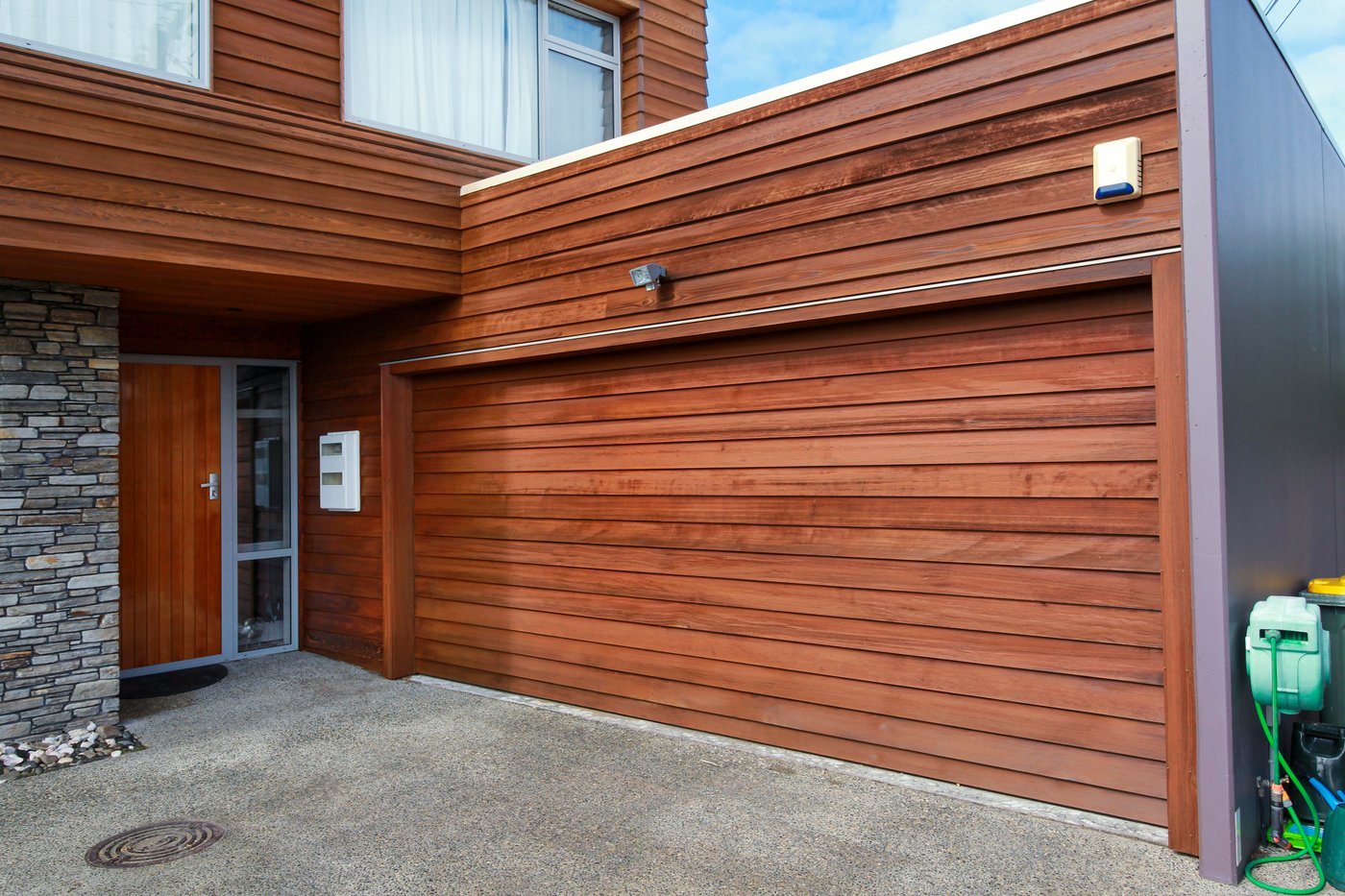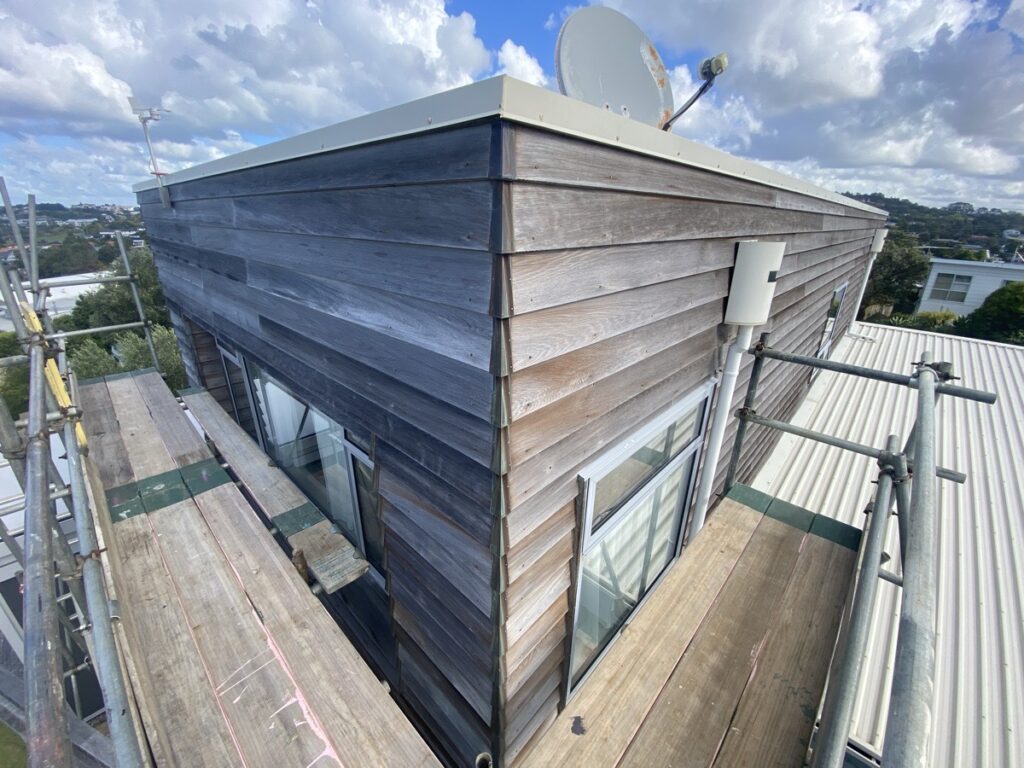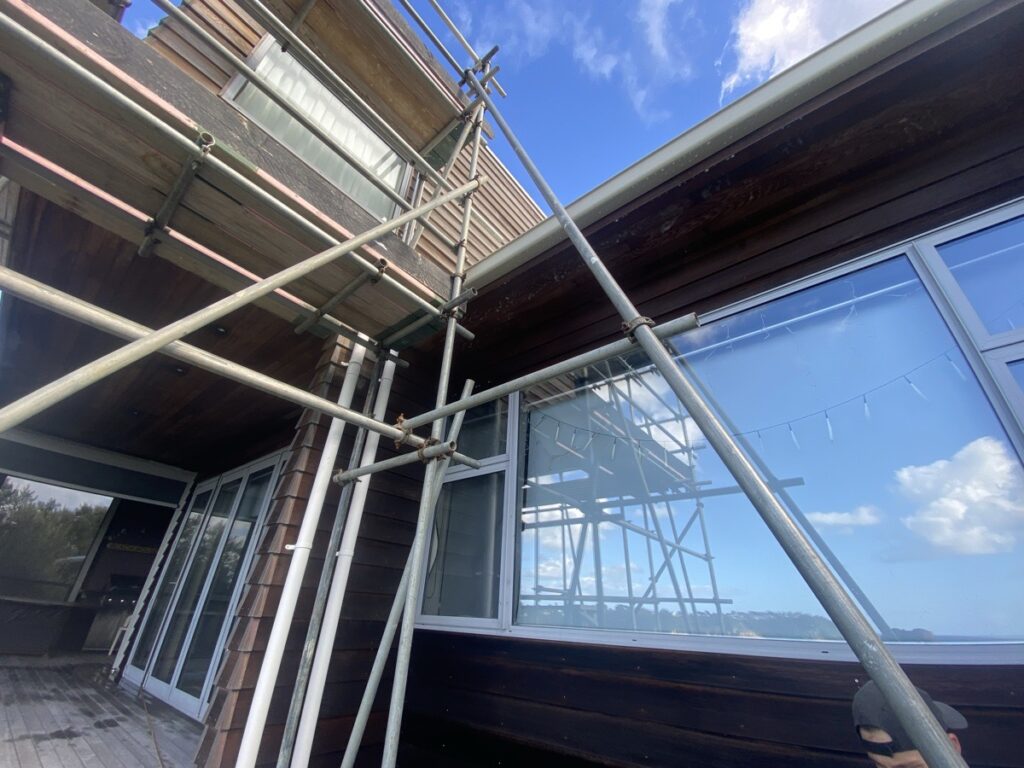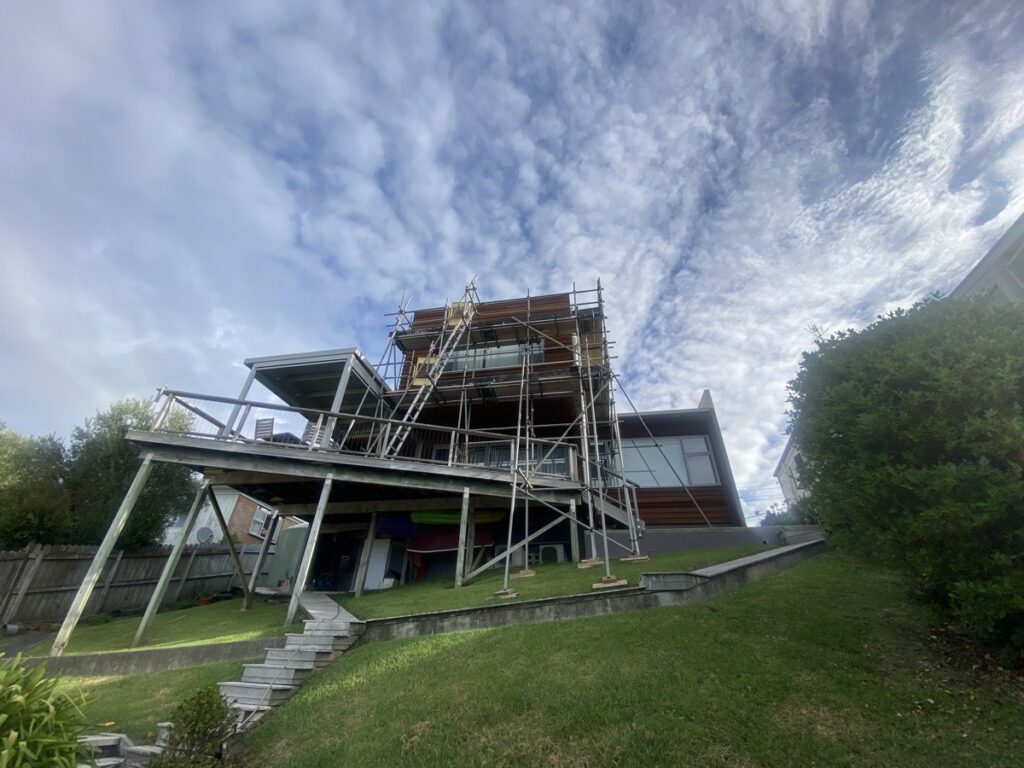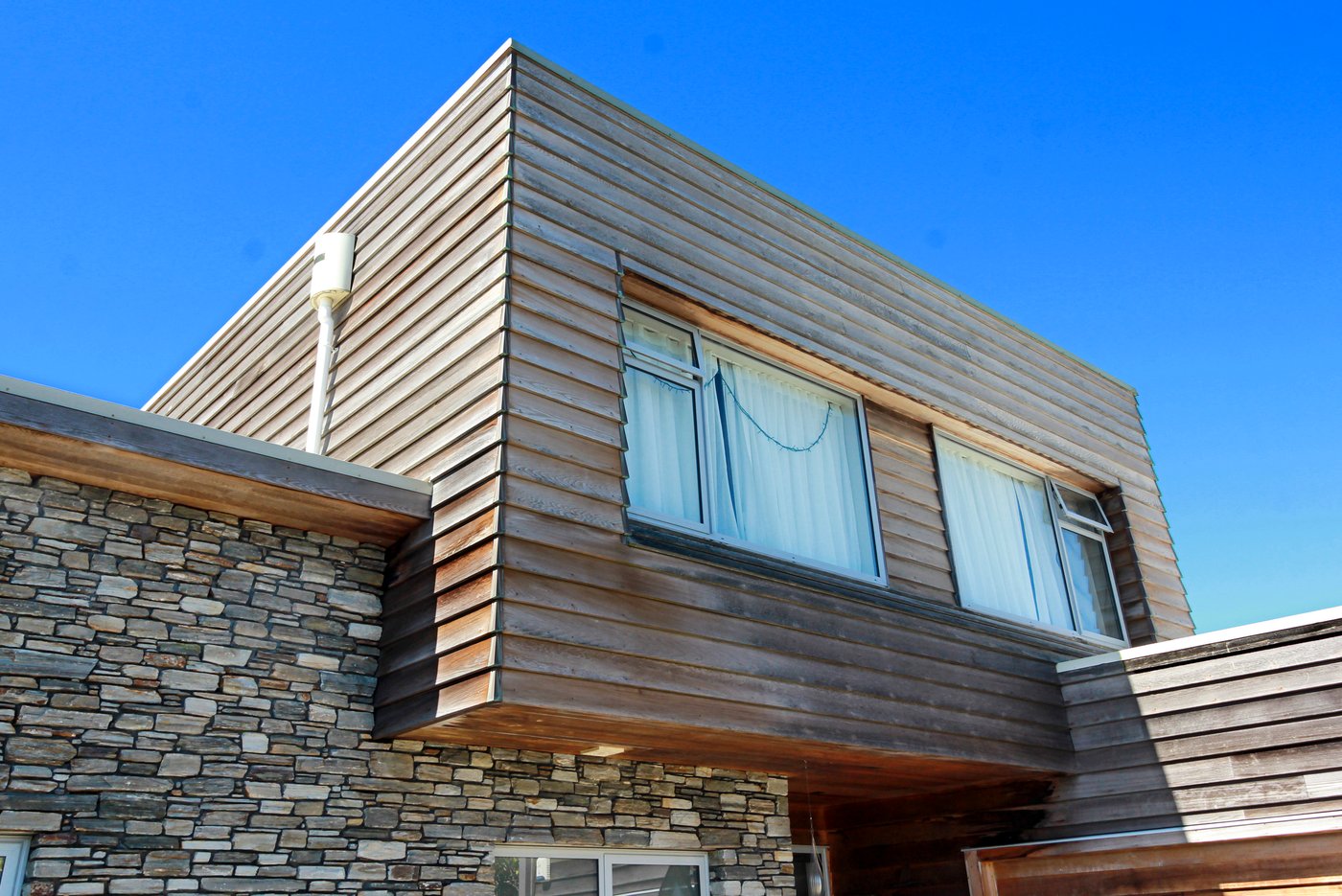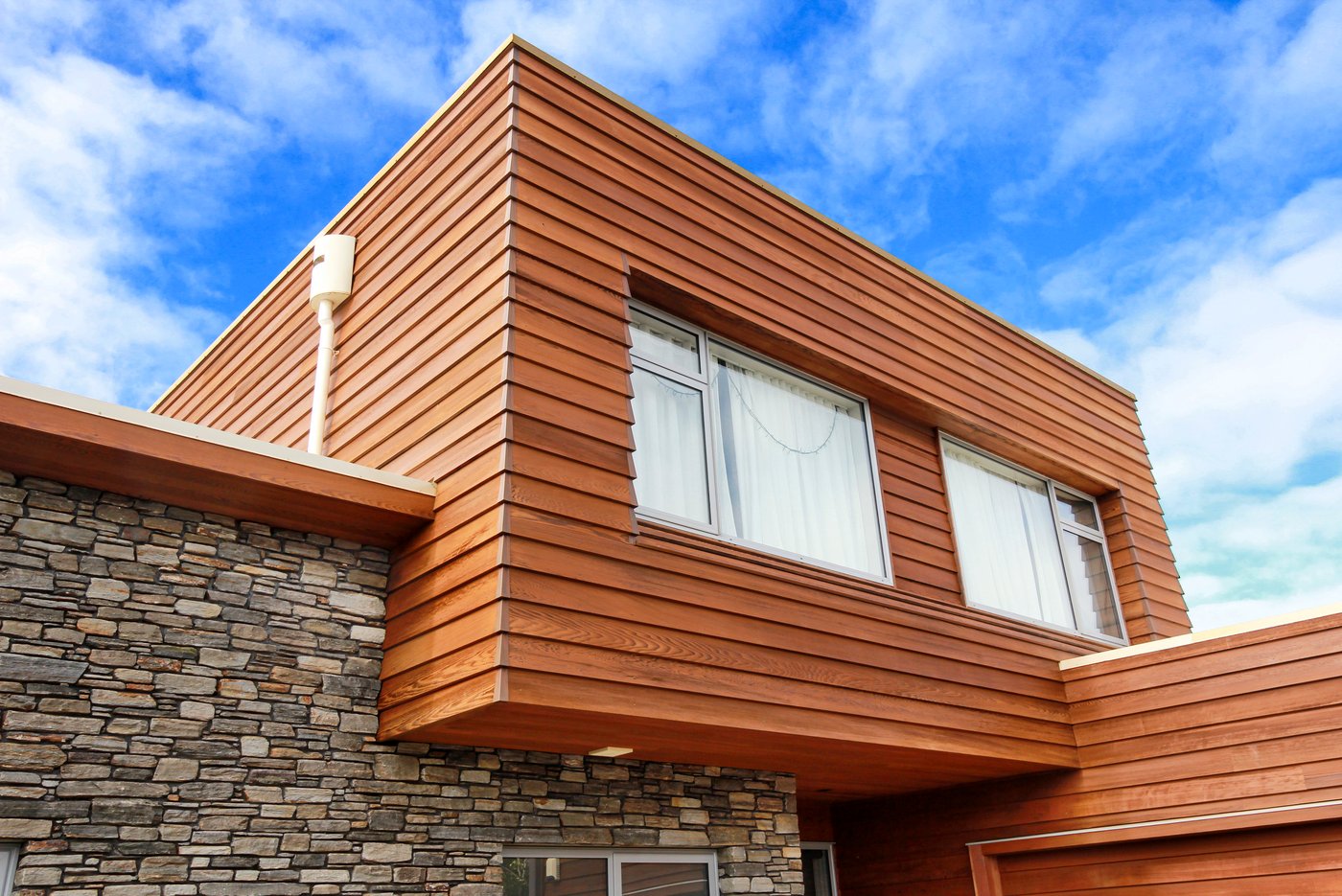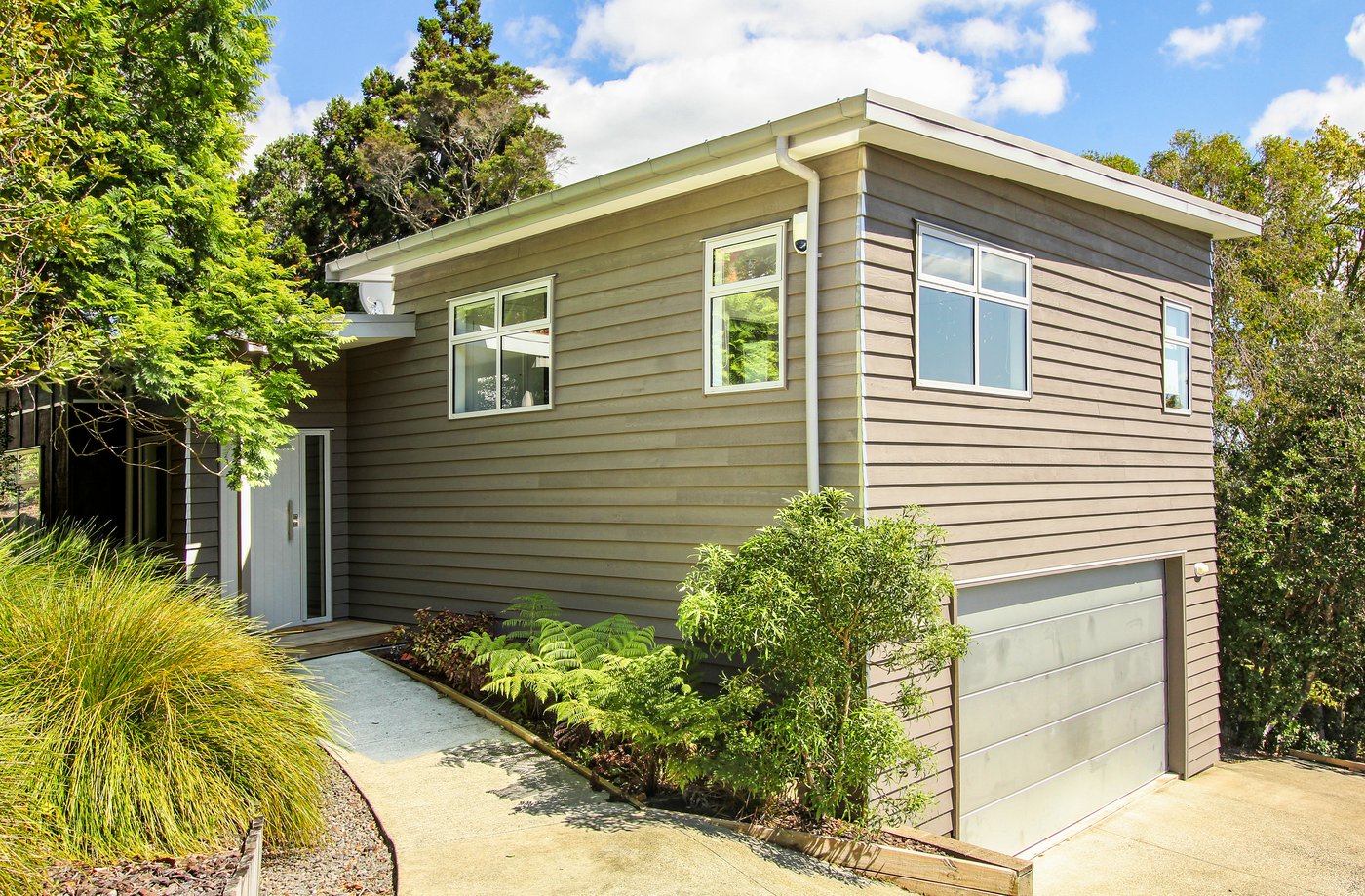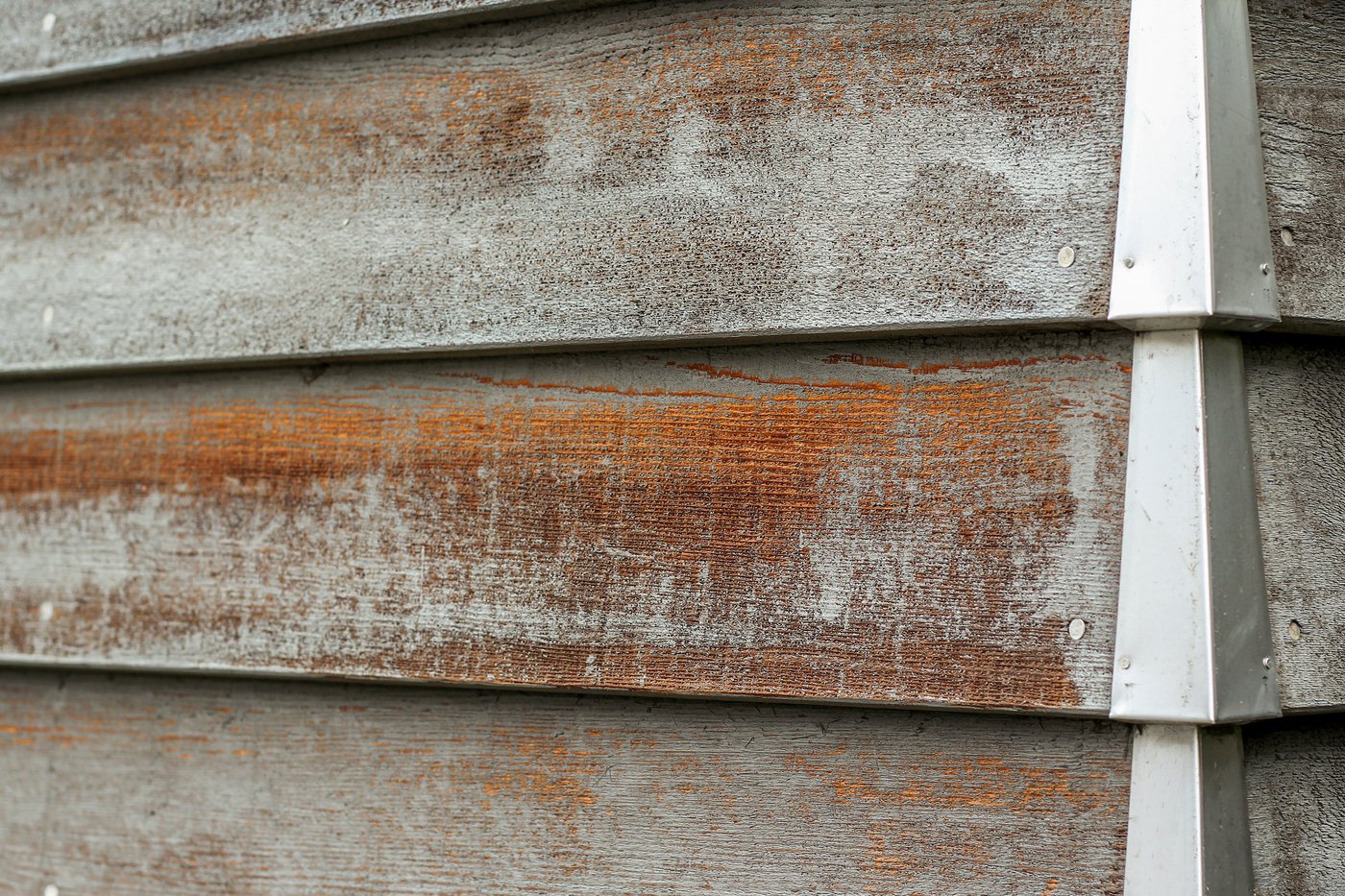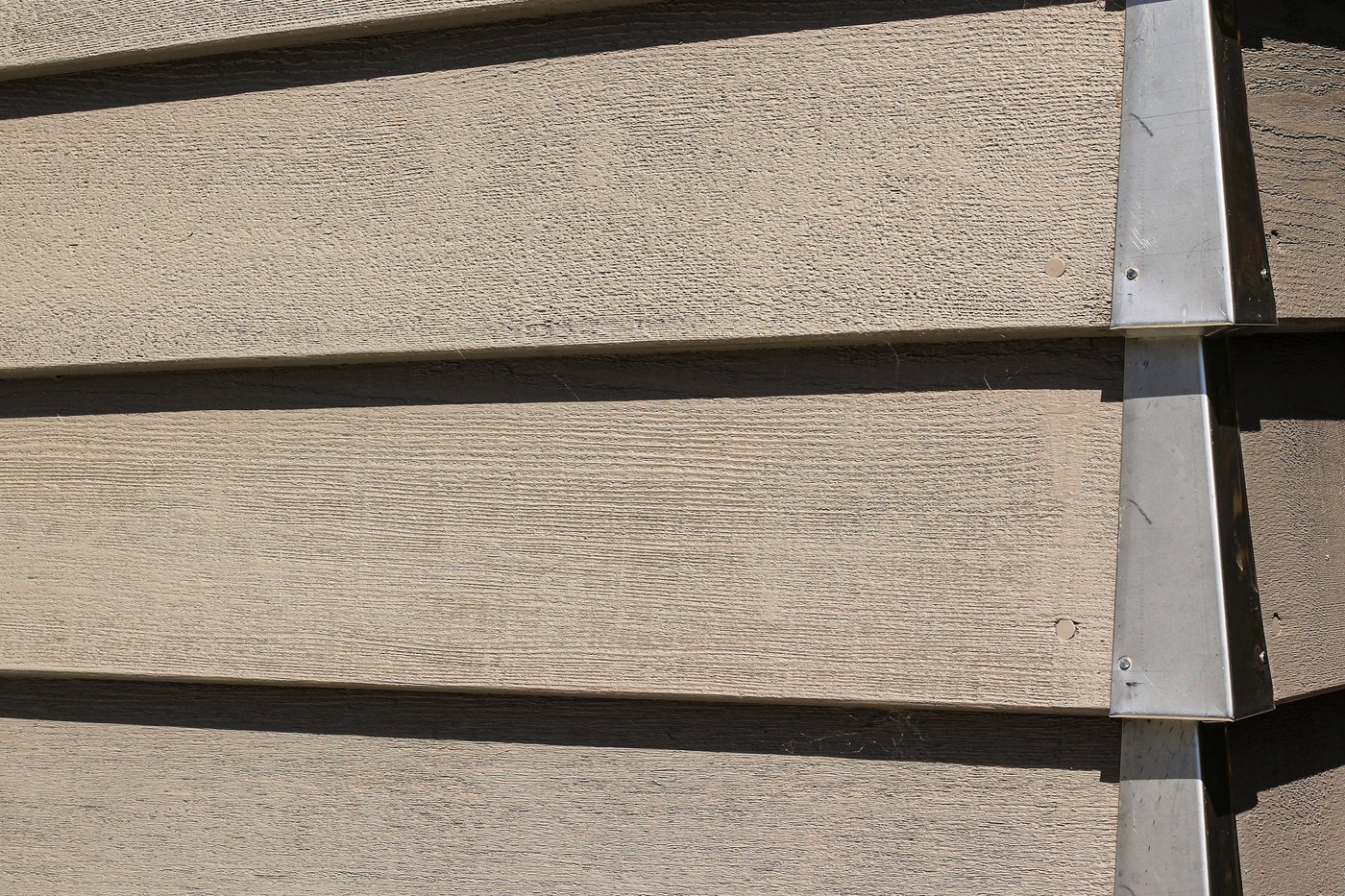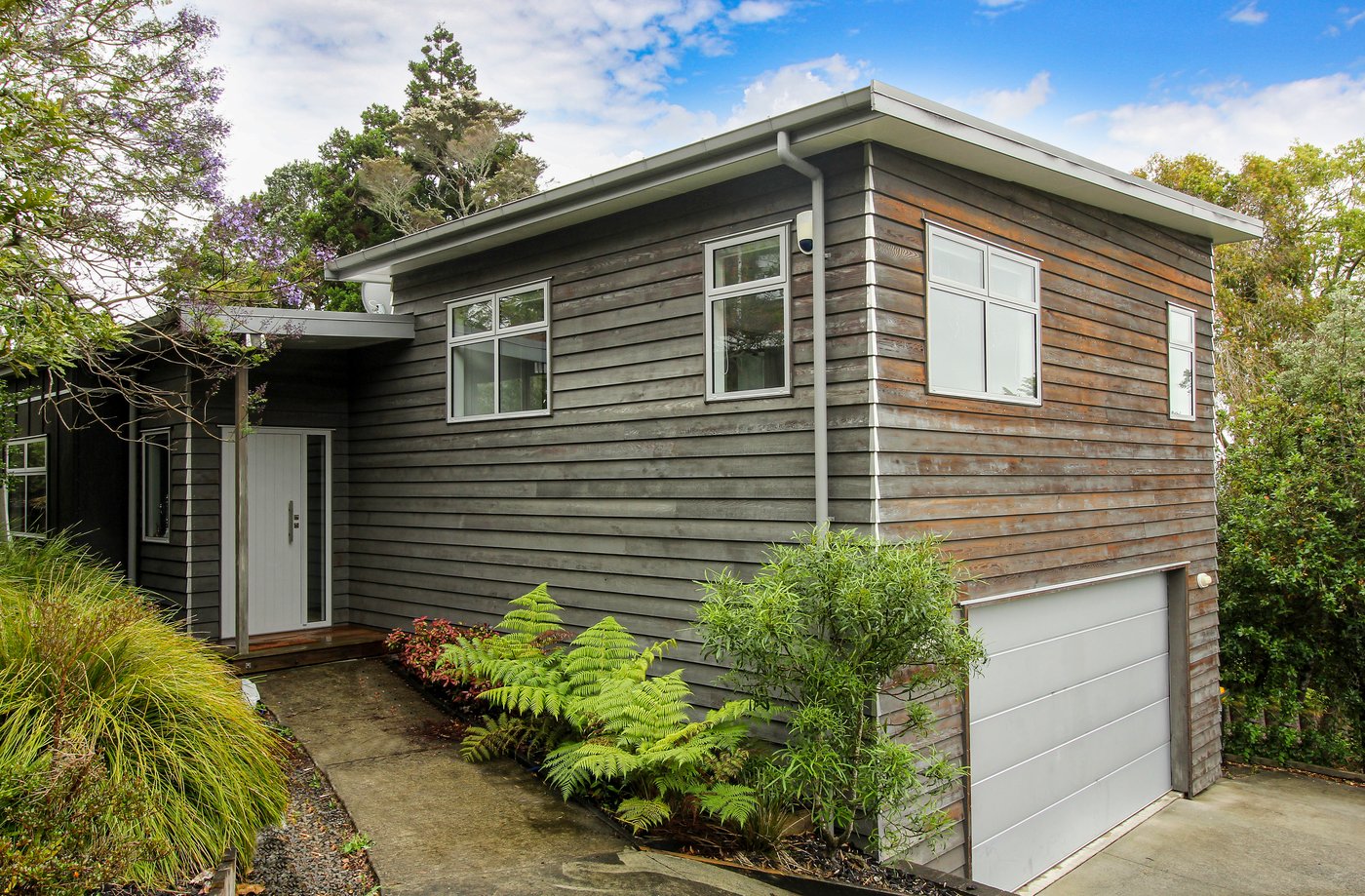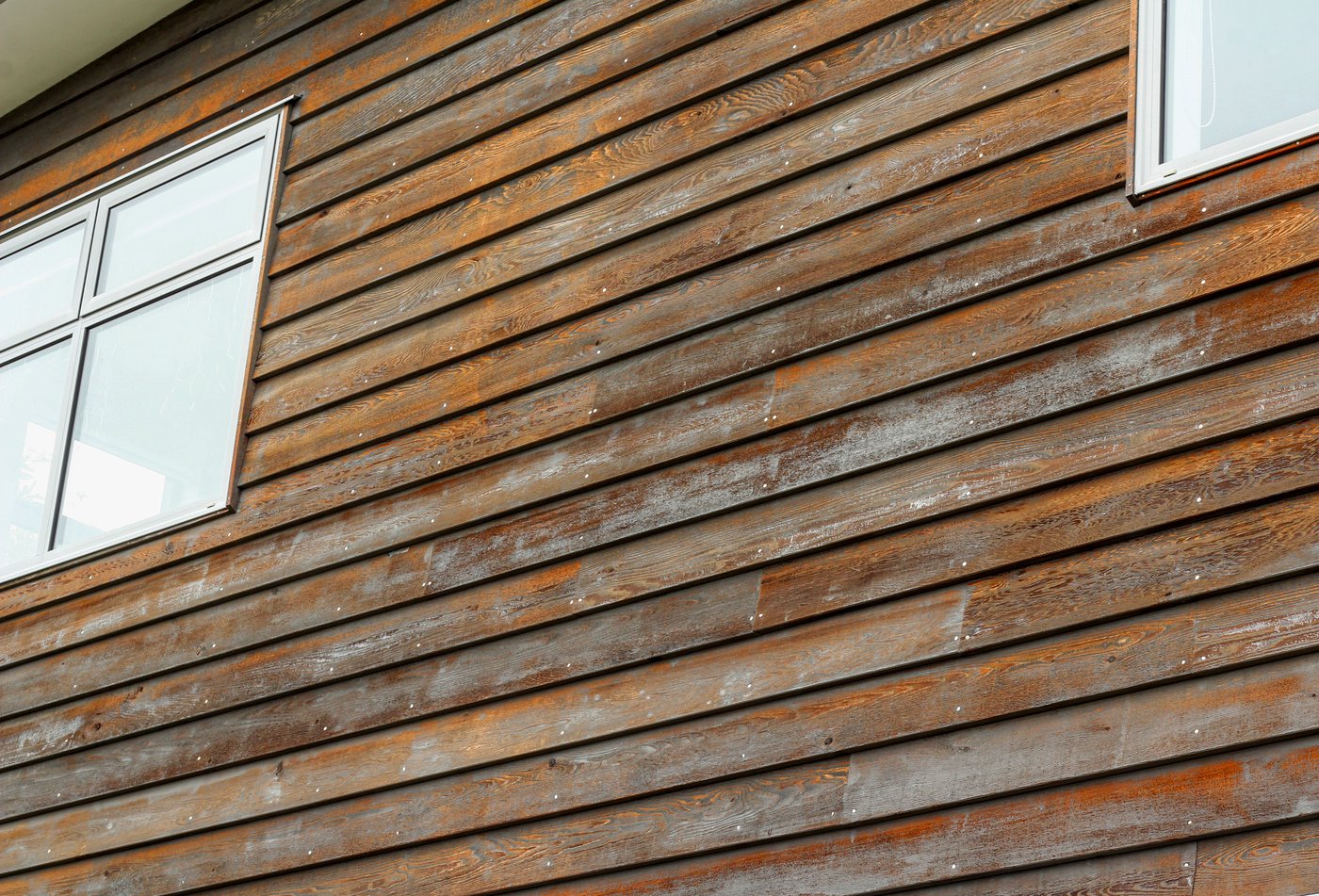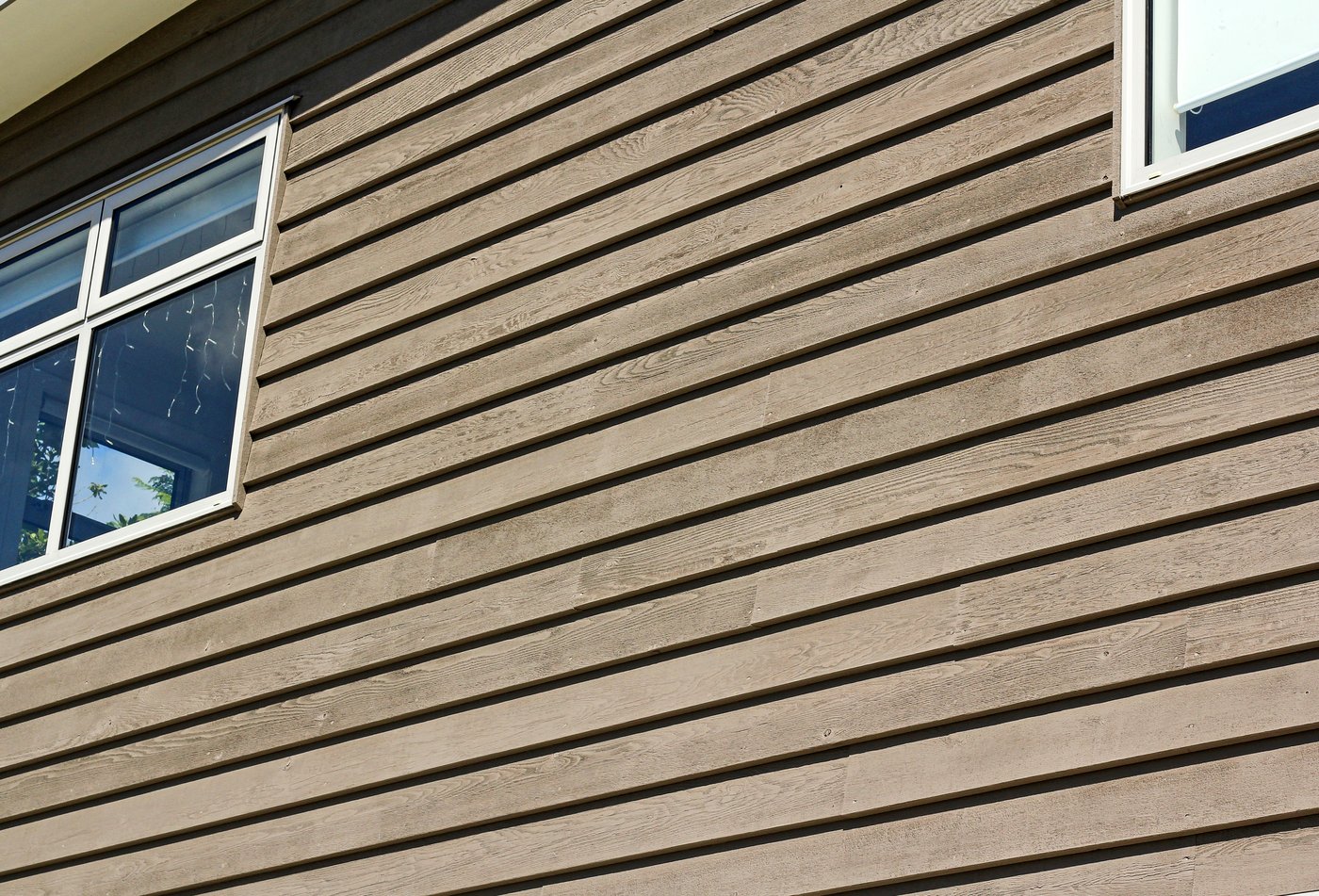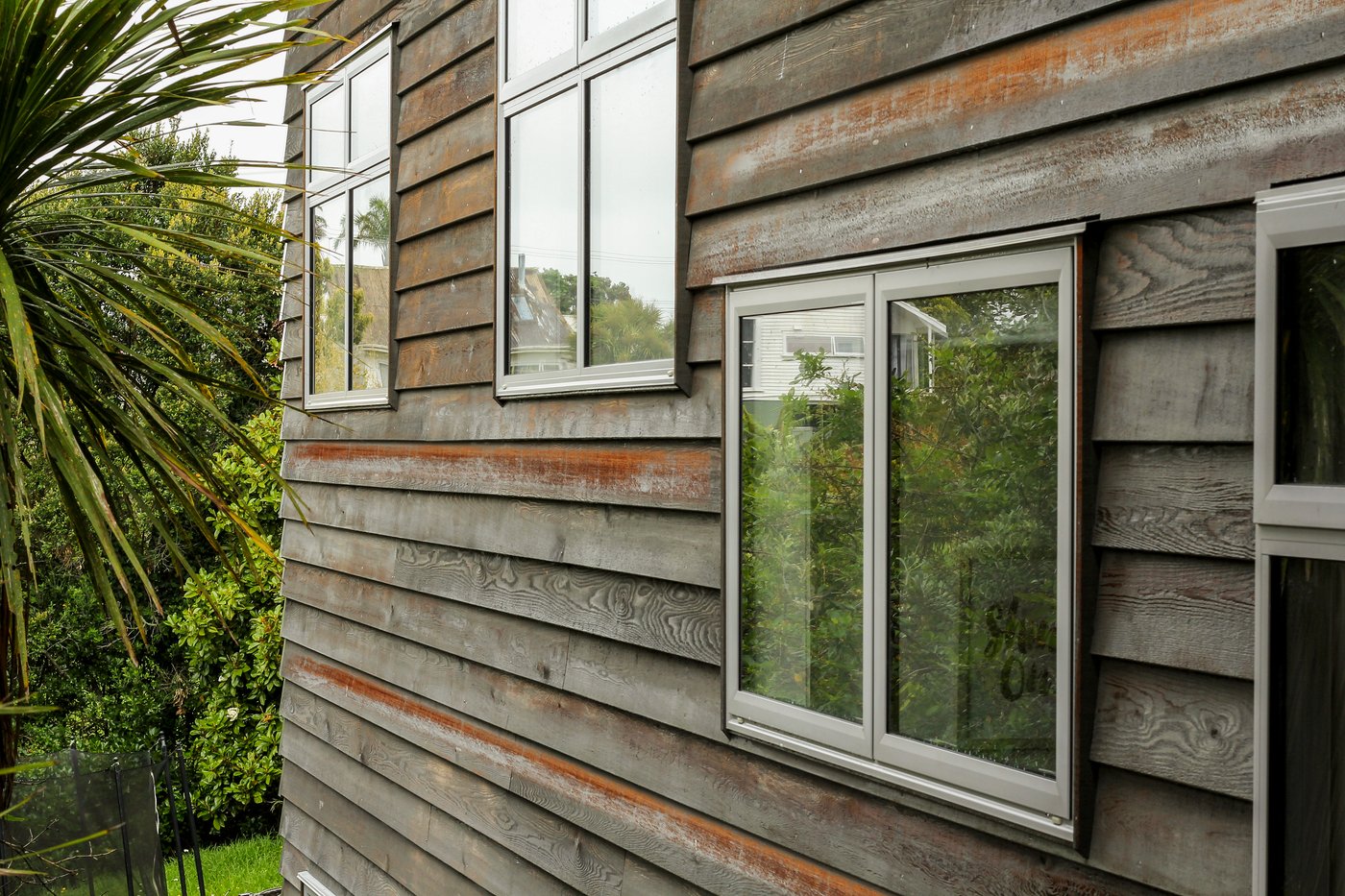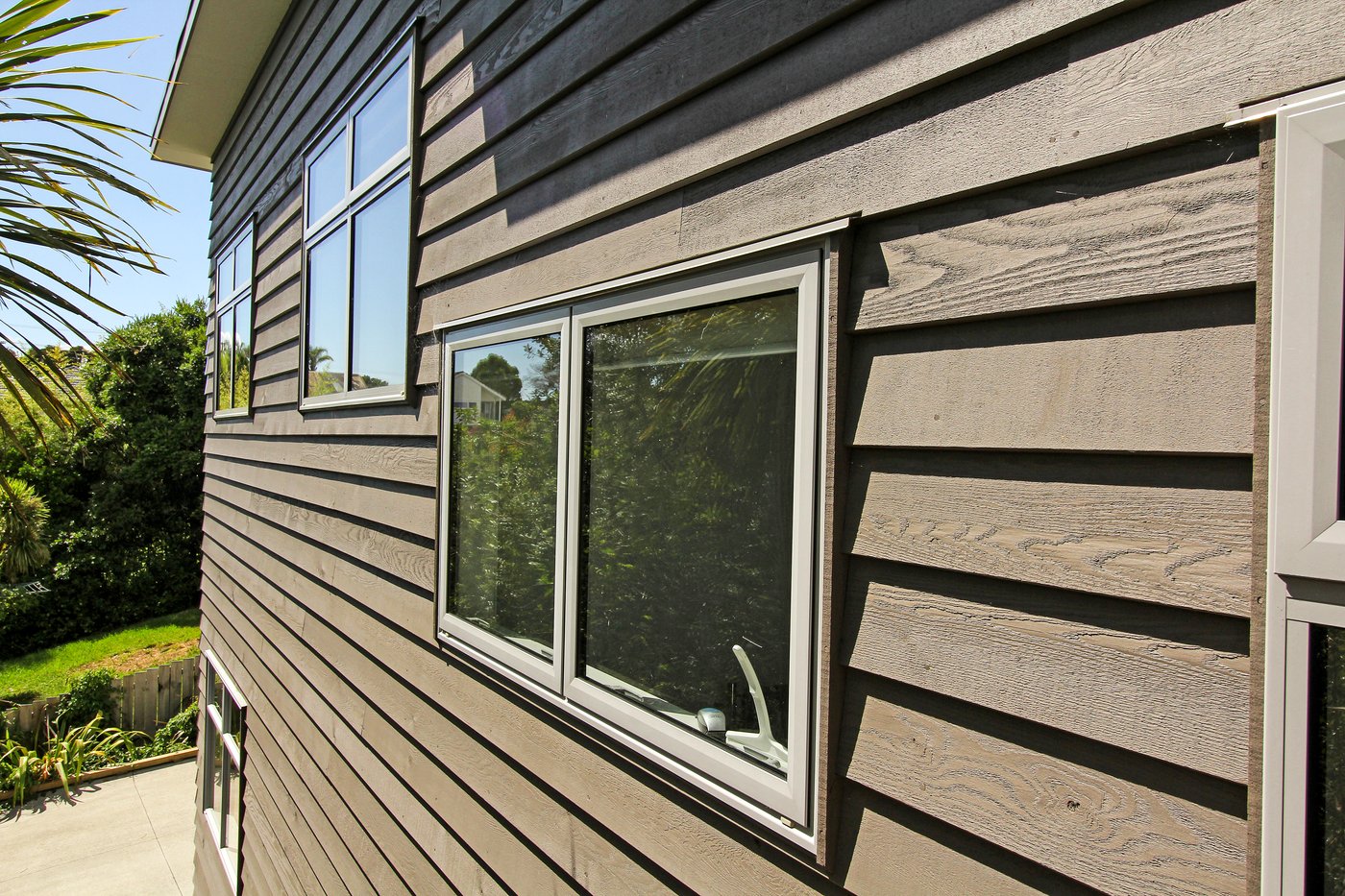This traditional Cedar home, located in West Harbour, was built in 1989 and has a distinctive red colouring common for the time, a style that has now come full-circle and makes the home feel vibrant and unique.
Upon first inspection, it was evident that the Cedar had not been treated for some years, with significant lichen, mould & dirt present. The north face (the back of the property) was very broken down, with porous boards that had started to cup and had been left 3 or 4 years too long without recoating.
As we needed to erect scaffolding to access the upper stories, the customer also asked if we could refresh their bargeboards with a new coat of paint.
This property is an excellent demonstration of the resilience of Cedar as a superior cladding material. Even after years of neglect, Cedar can be renewed with a wash and recoat, followed by regular maintenance to maintain its natural beauty.
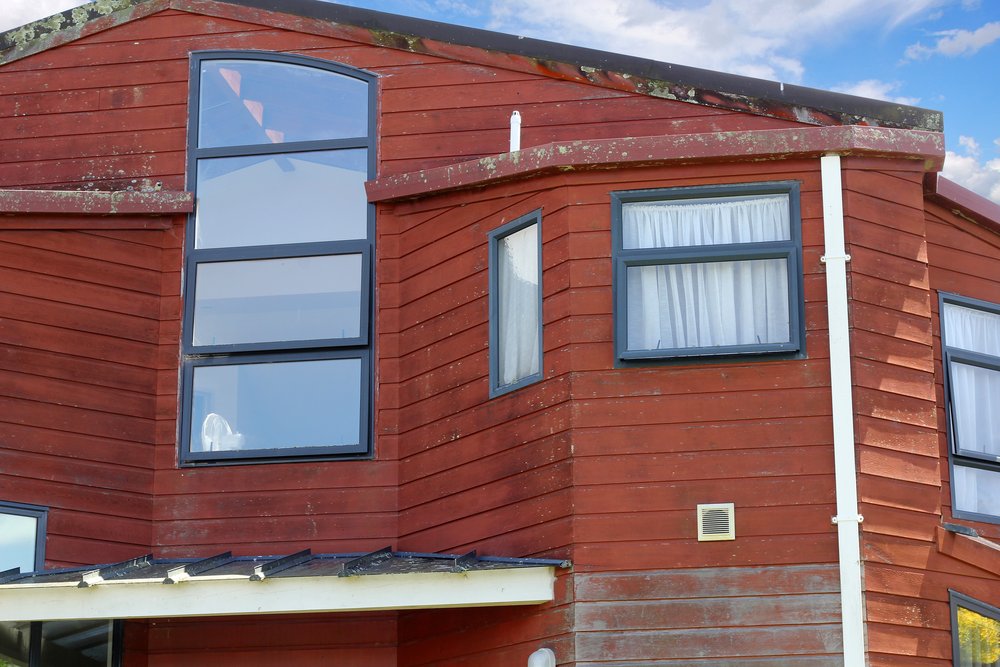
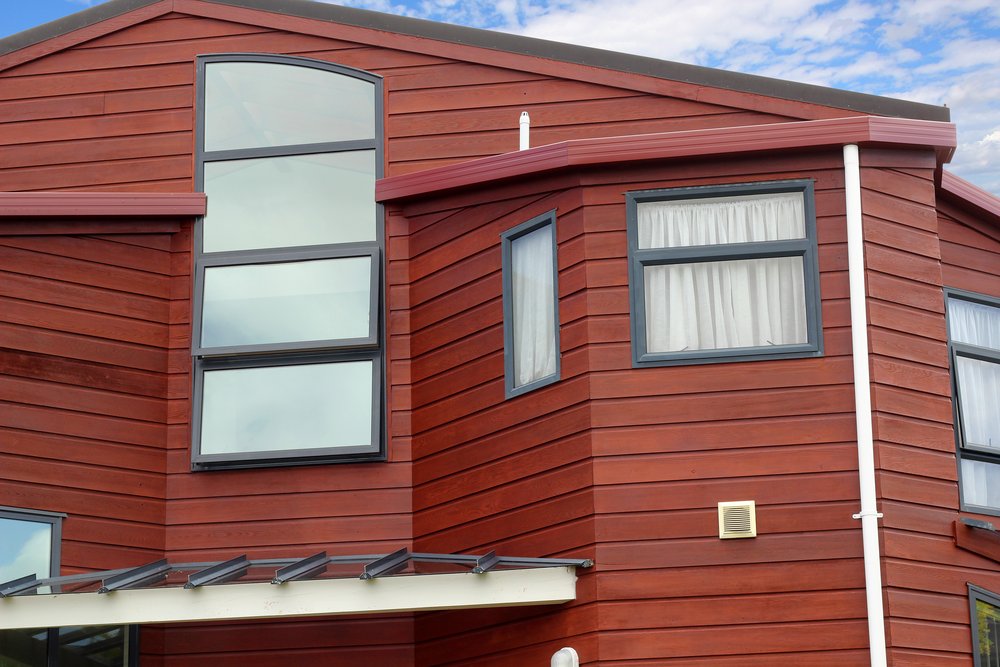
The Maintenance Process
The first step in the maintenance process is a chemical wash from roofline to ground using a penetrating surfactant and soft wash. Particular attention is paid to the cladding, removing all organic material from the timber in preparation for the treatment.
Following the wash, we treated the timber with Resene Woodsman Waterborne stain. Unlike the original stain, the new generation of oil stains are emulsified in water instead of solvents, which is better for the environment, and come in a range of colours.
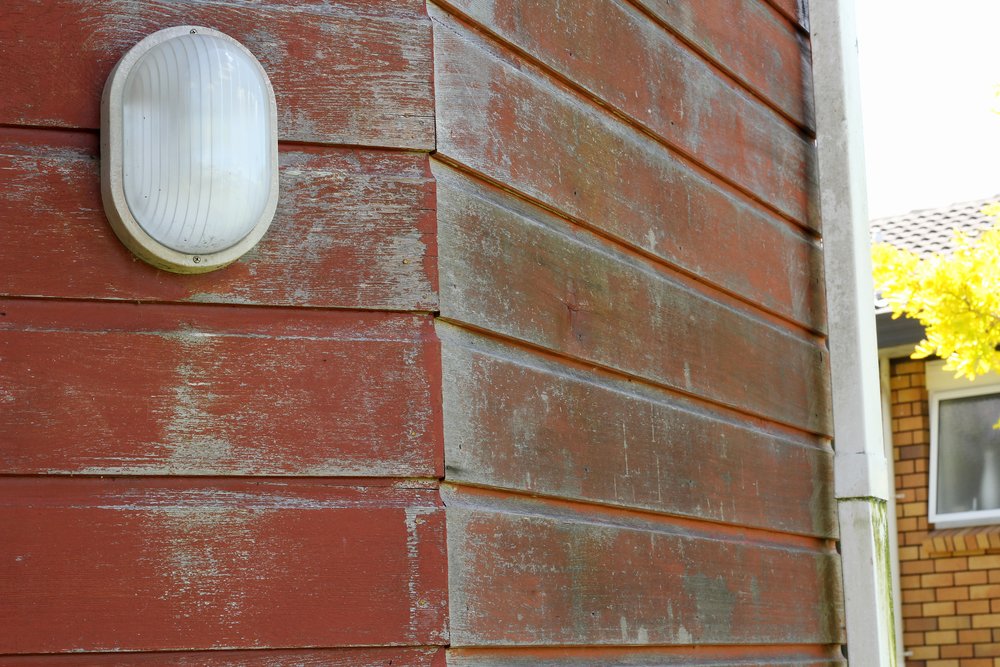
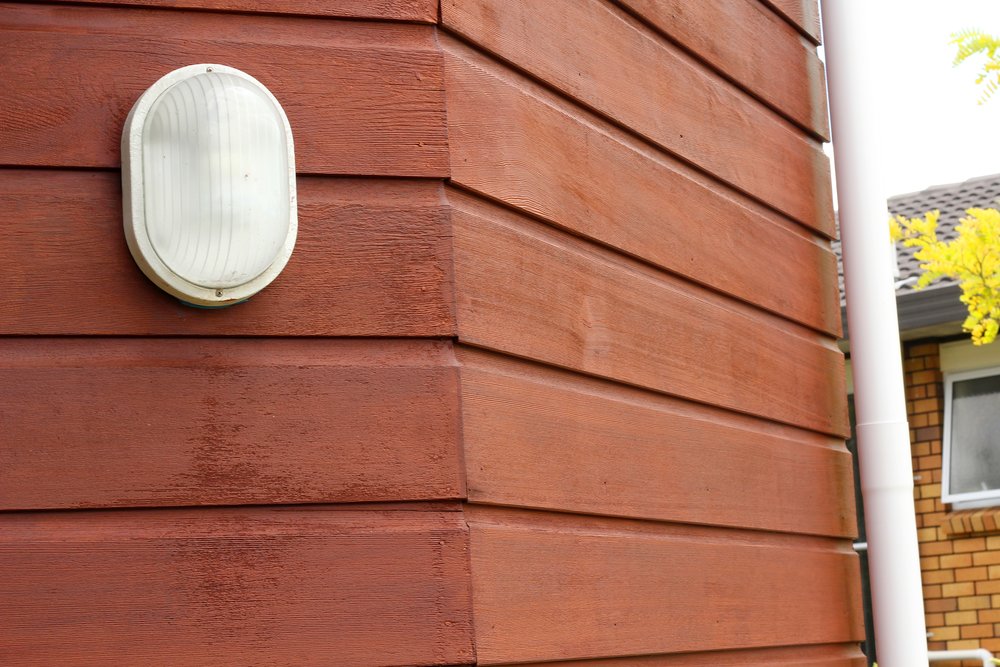
The south face of the house (which is the front of the property, as seen in the images) was reasonably protected from the sun and just needed a wash, lichen removal and a recoat. The north face required 3 solid coats of stain to bring the boards back up to standard.
To restore the bargeboards, we removed the existing spouting, filled the holes, lightly sanded to prime, then applied 2 coats of 100% acrylic paint.
Challenges with Older Homes
Many older homes are exposed to the sun for extended periods without regular maintenance and require additional treatment. The north face of this property was particularly weathered and required a stronger washing process and more stain applications to bring the Cedar back to life.
Stains produced back in the day were also very strong, almost like a hybrid paint, and were designed to stop the timber aging rather than enhance the natural beauty. This can make it difficult to work with, especially if you want to change the colour or transition to an oil.
The most cost-effective solution is to enhance what is already there, which is the approach we took with this property.
Ongoing Maintenance Requirements
The property is now set for another 2 or 3 summers before needing another recoat on the exposed faces. The southern face can sit comfortably for another 5-7 years with only a light wash to remove airborne pollutants from the surface.
The Final Outcome
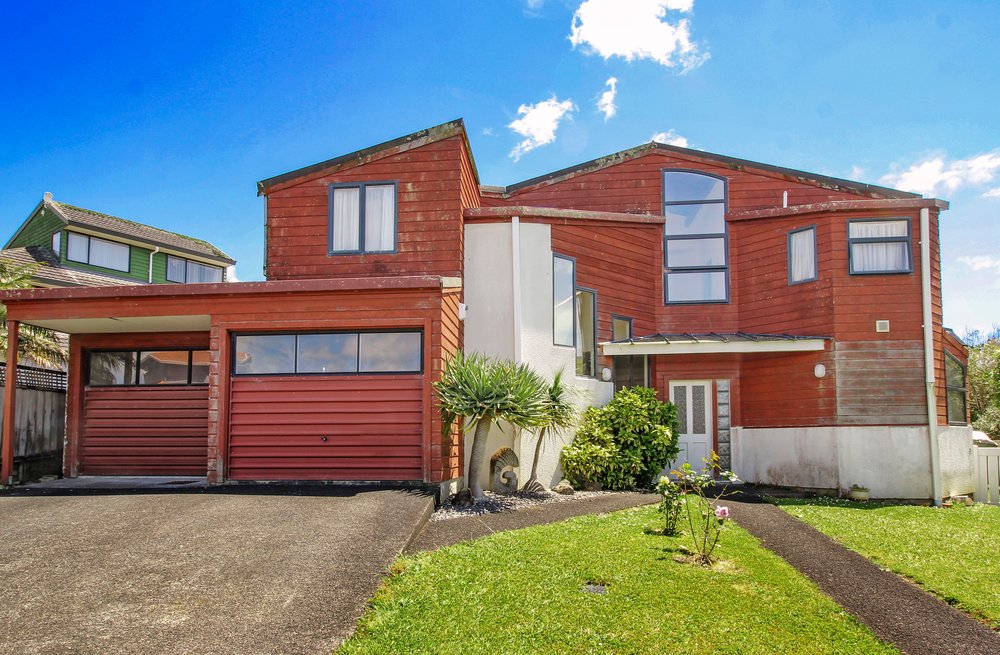
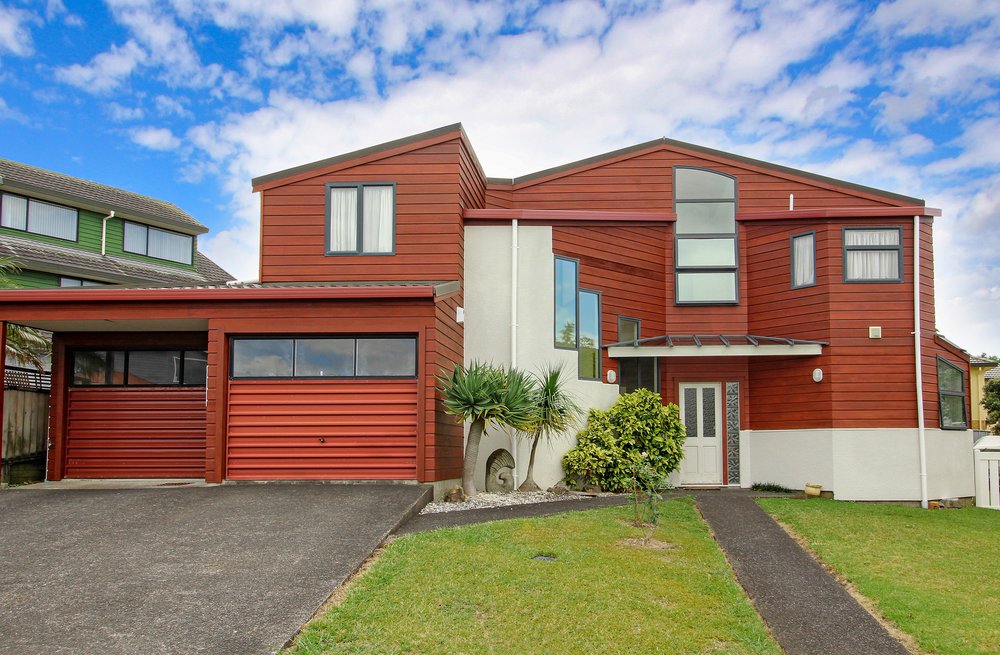
The end result was a stunning transformation!
We were able to restore the Cedar to its former glory, while retaining the unique look of the red-stained timber. As we were given the opportunity to maintain the whole house, our team was able to take care of even the smallest details, giving the whole property a new lease of life.
We even cleaned up the letterbox and applied the same stain, the finishing touch on a very satisfying job!



